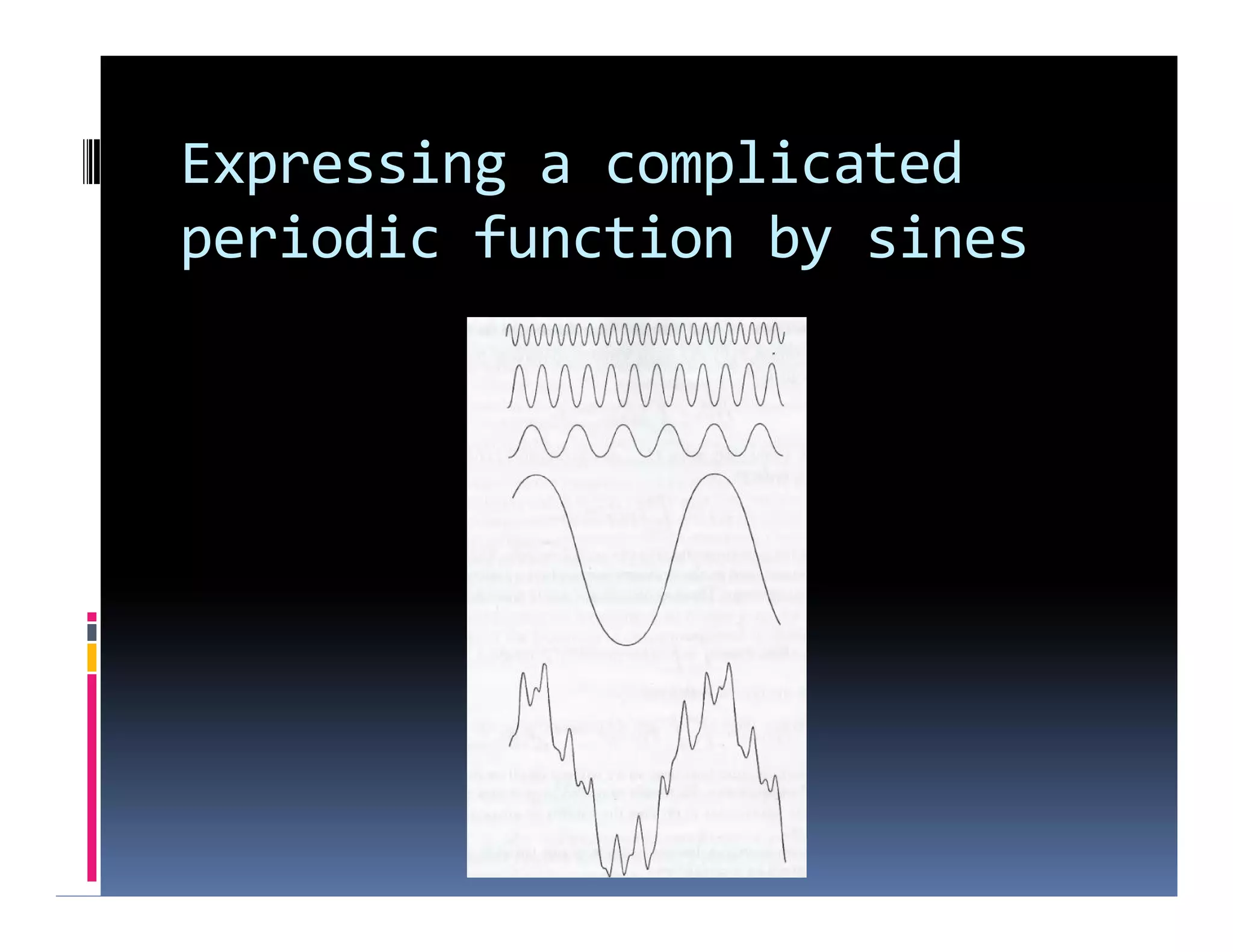This document discusses image enhancement techniques in the spatial domain. It defines spatial domain processing as the direct manipulation of pixel values, as opposed to frequency domain processing which modifies the Fourier transform. The key techniques discussed are:
- Linear and non-linear transformations which map input pixel values to new output values.
- Spatial filters which operate on neighborhoods of pixels, including smoothing filters to reduce noise and sharpening filters to enhance edges.
- Histogram processing techniques like equalization to improve contrast in low contrast images.
The document provides examples of each technique and discusses their applications in image enhancement.

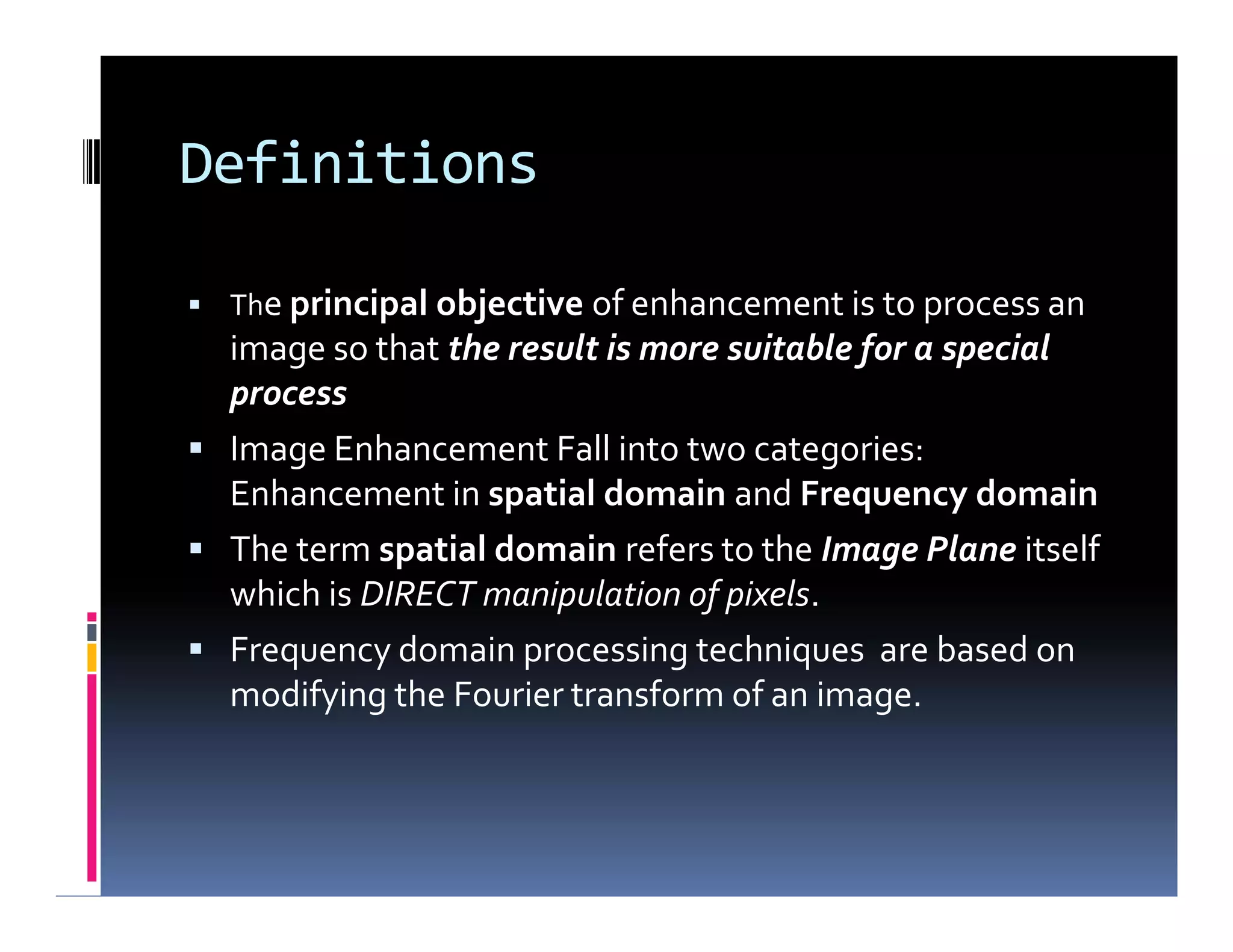
![The term “SPATIAL Domain”
Spatial Domain=Aggregate of pixels
composing an image.
Spatial Domain Methods=Procedures that
operate directly on these pixels.
Denoted by: g(x,y)=T[f(x,y)]
F(x,y) : Input Image ,T: Operator on Image
g(x,y): Processed Image.
T also can operate on a set of Images.
Spatial Domain=Aggregate of pixels
composing an image.
Spatial Domain Methods=Procedures that
operate directly on these pixels.
Denoted by: g(x,y)=T[f(x,y)]
F(x,y) : Input Image ,T: Operator on Image
g(x,y): Processed Image.
T also can operate on a set of Images.](https://image.slidesharecdn.com/4-imageenhancementinspatialdomain-191207084842/75/4-image-enhancement-in-spatial-domain-3-2048.jpg)

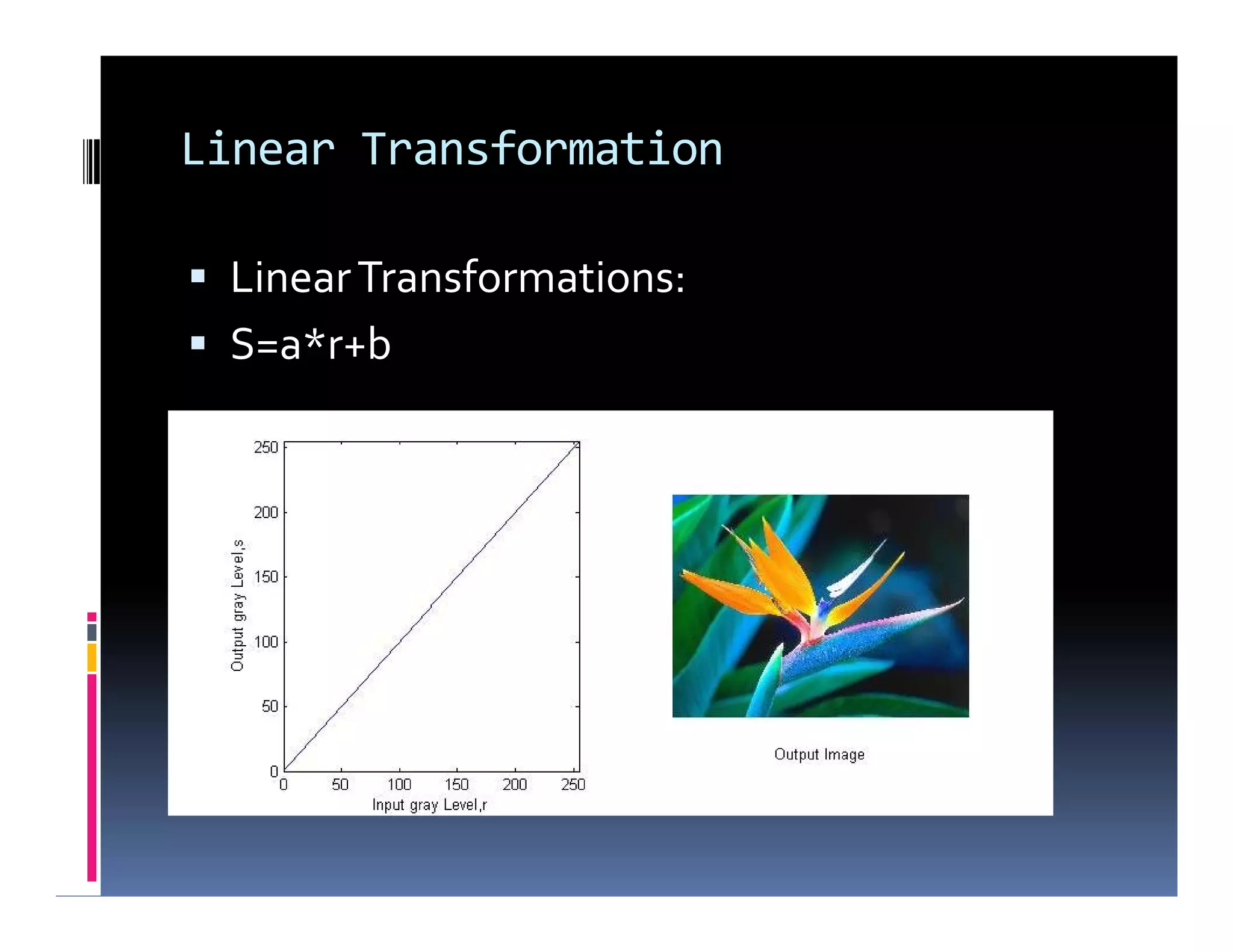

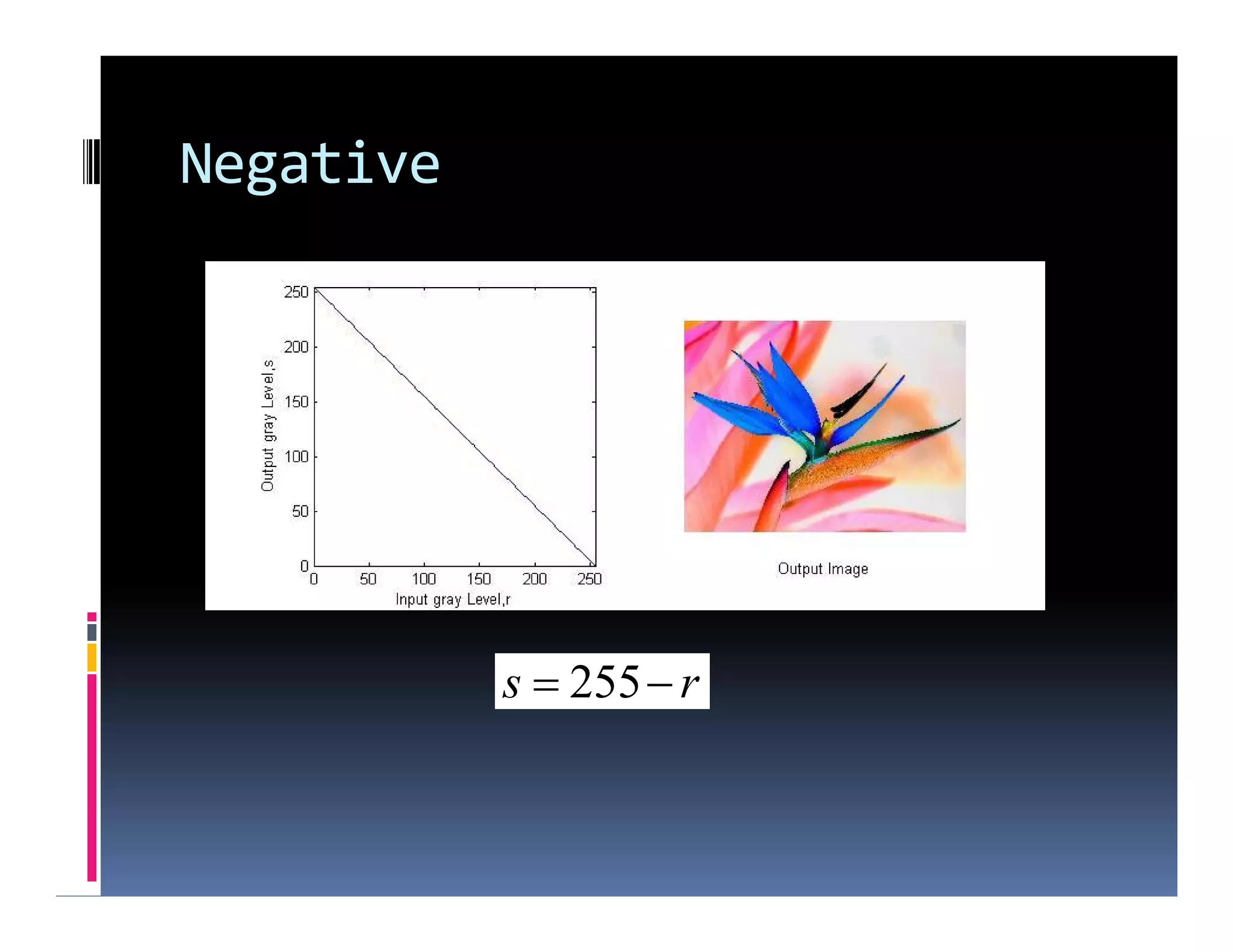
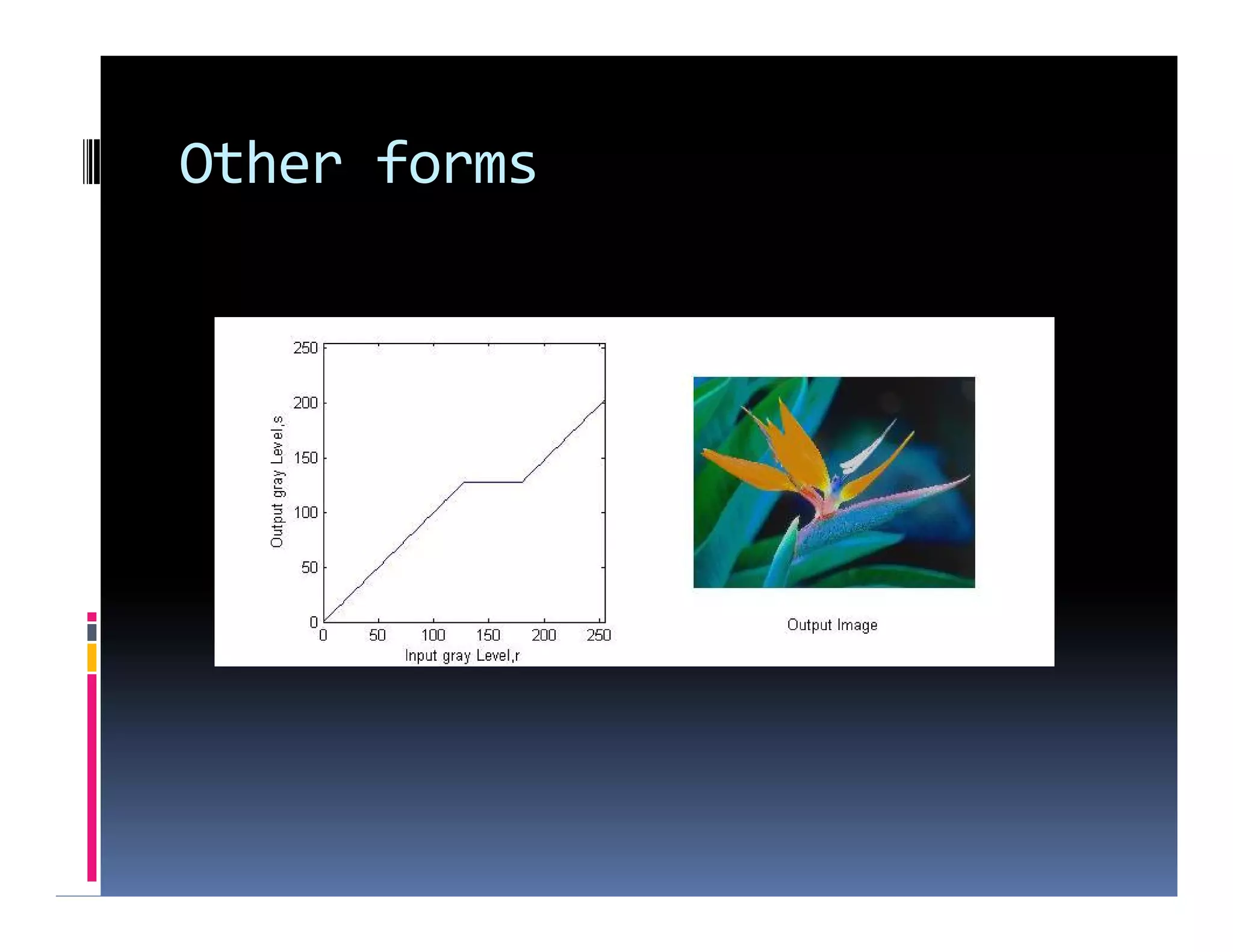
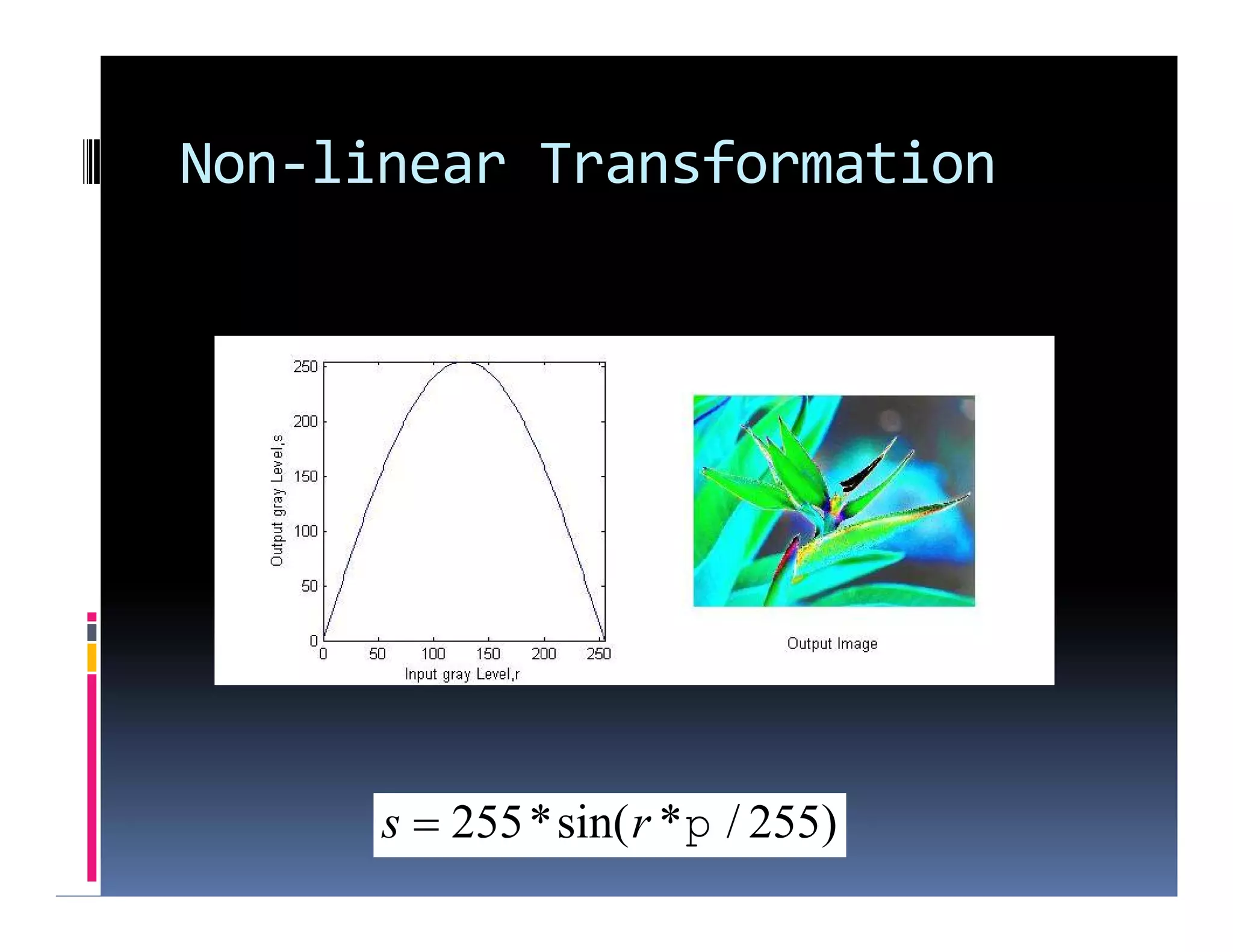

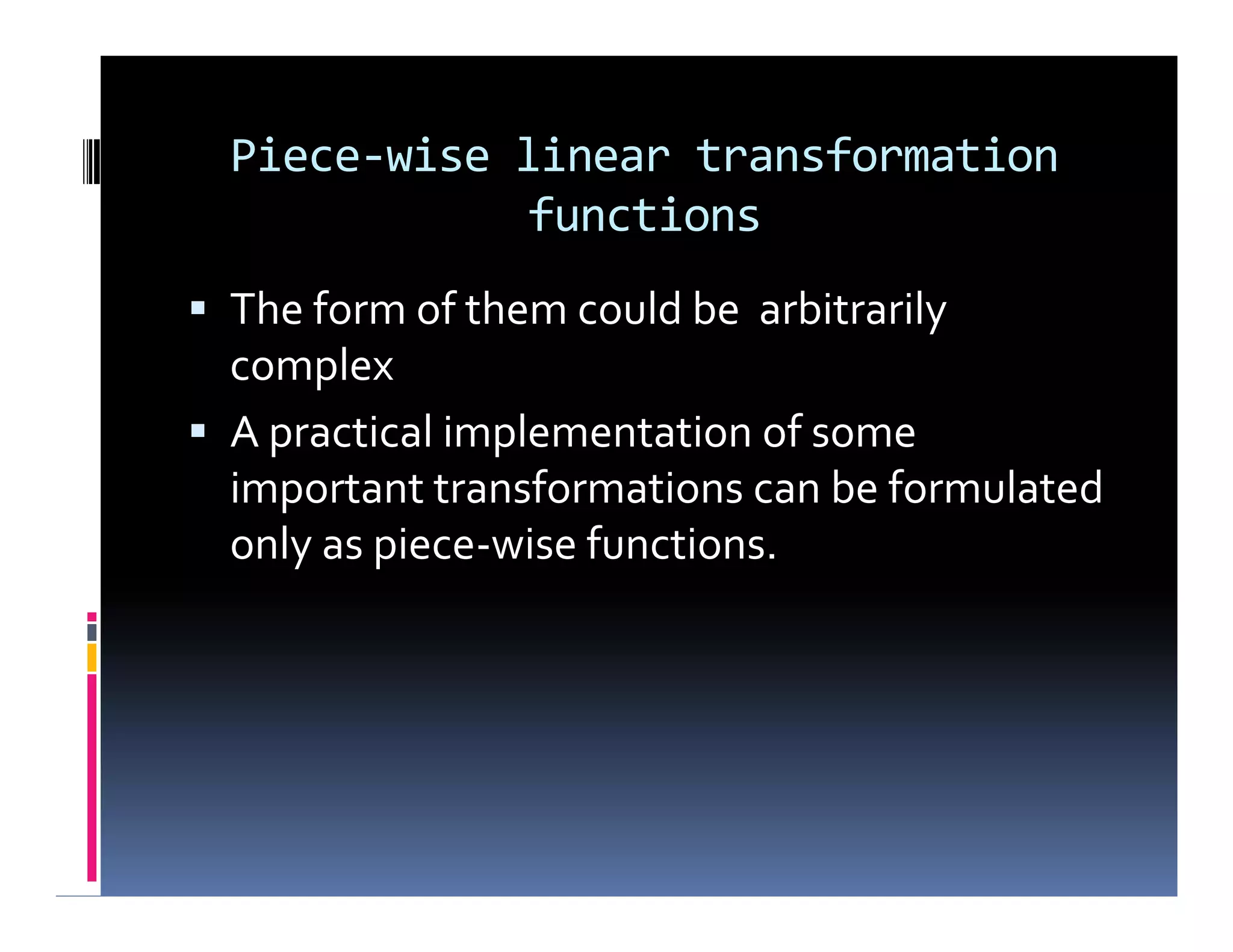
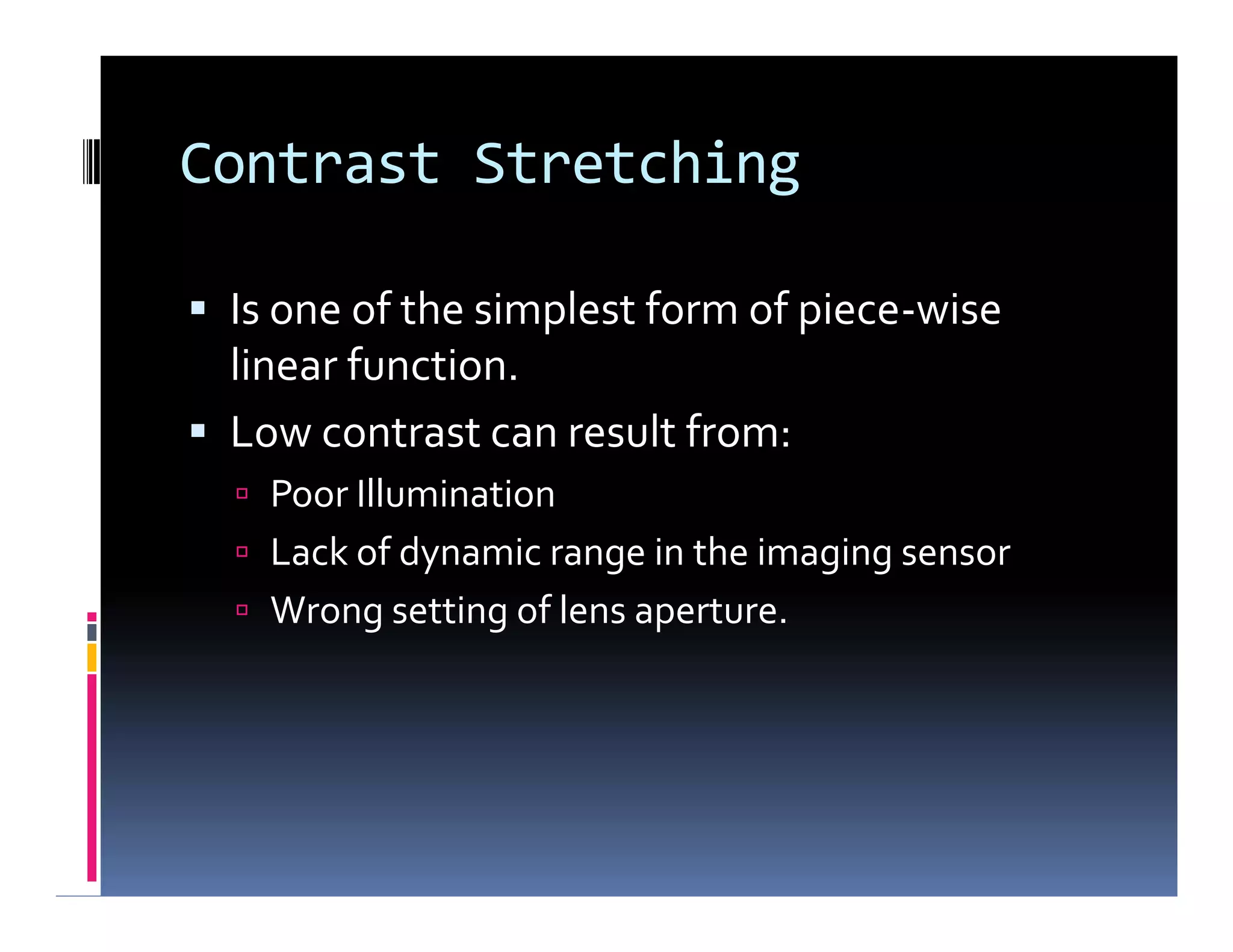
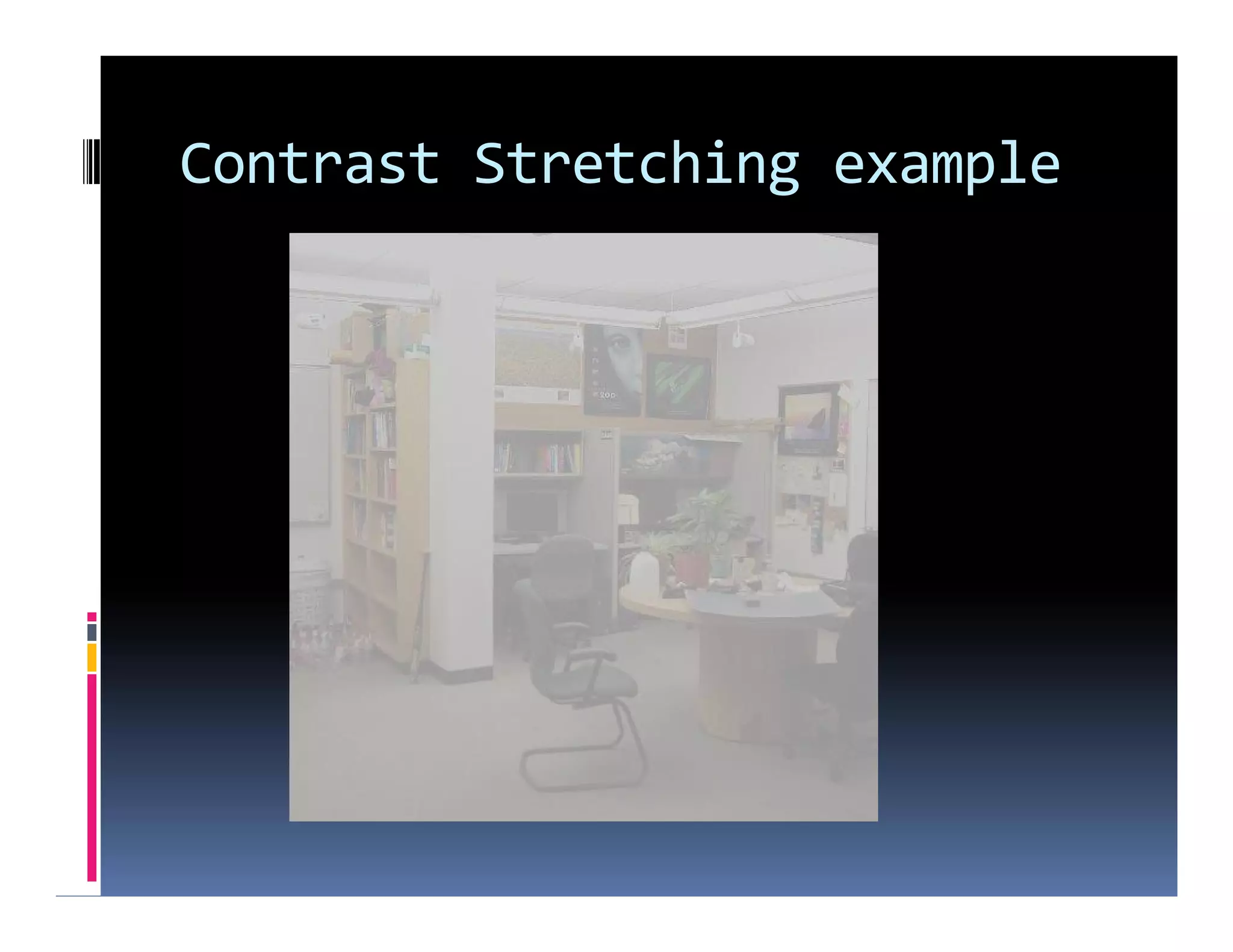
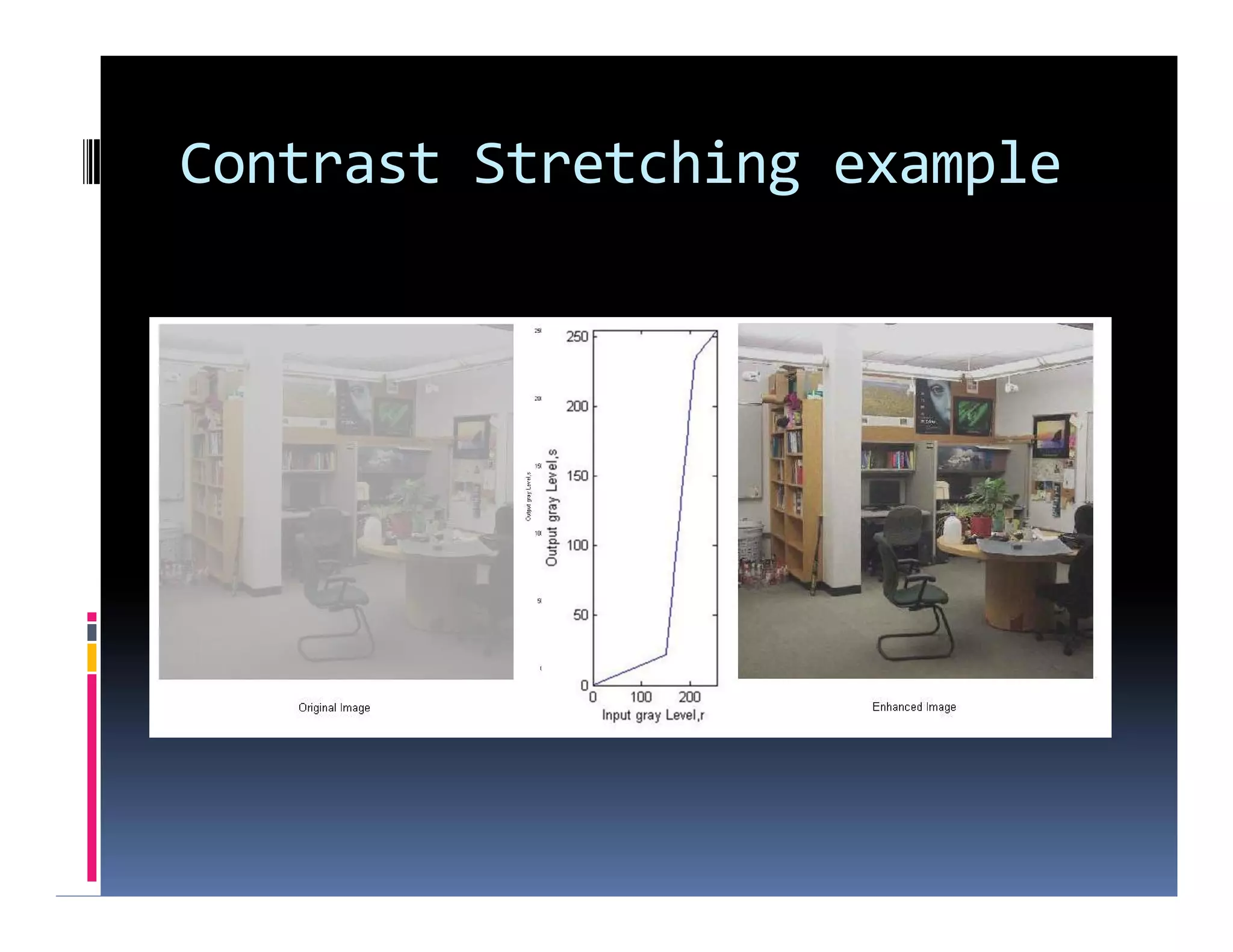
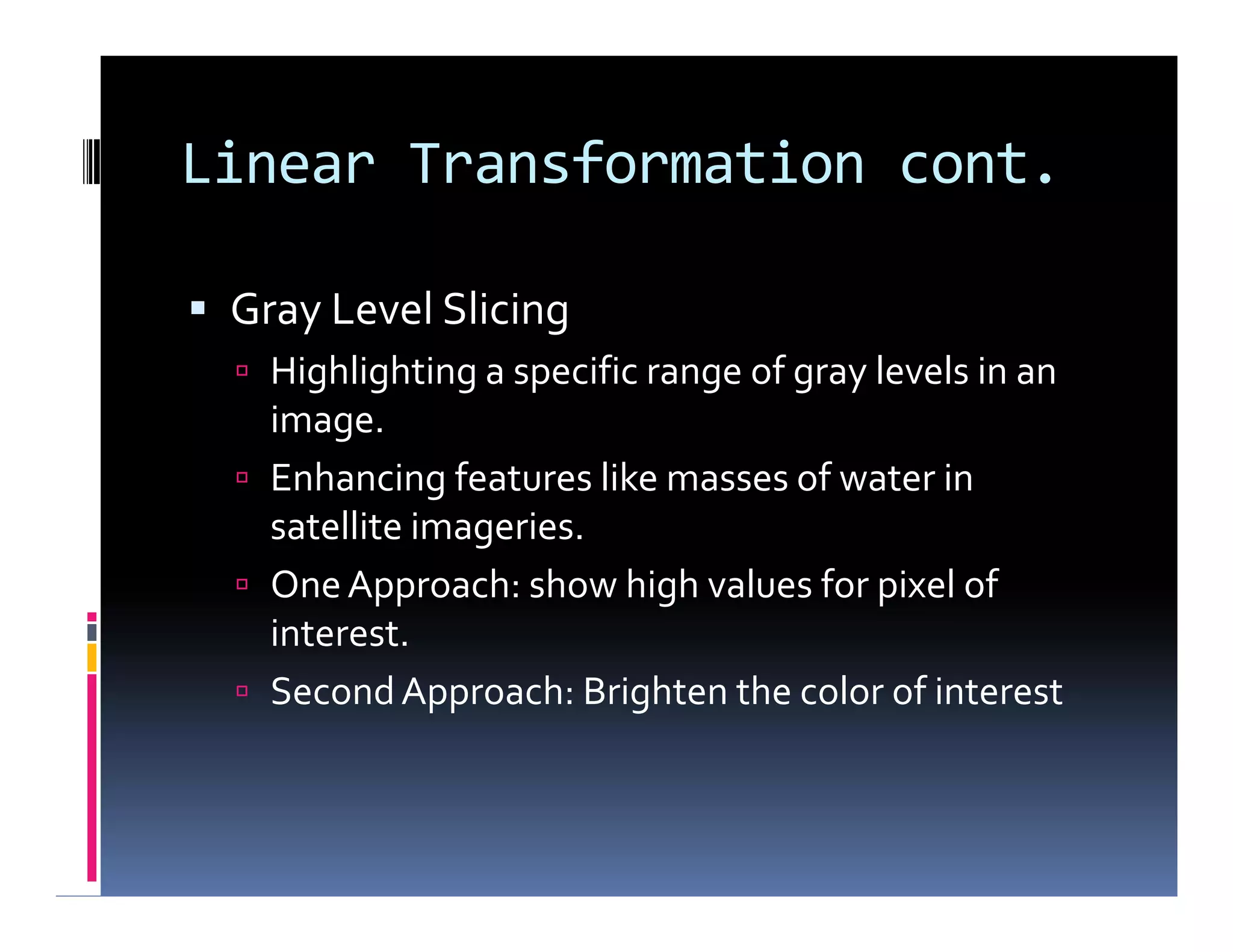
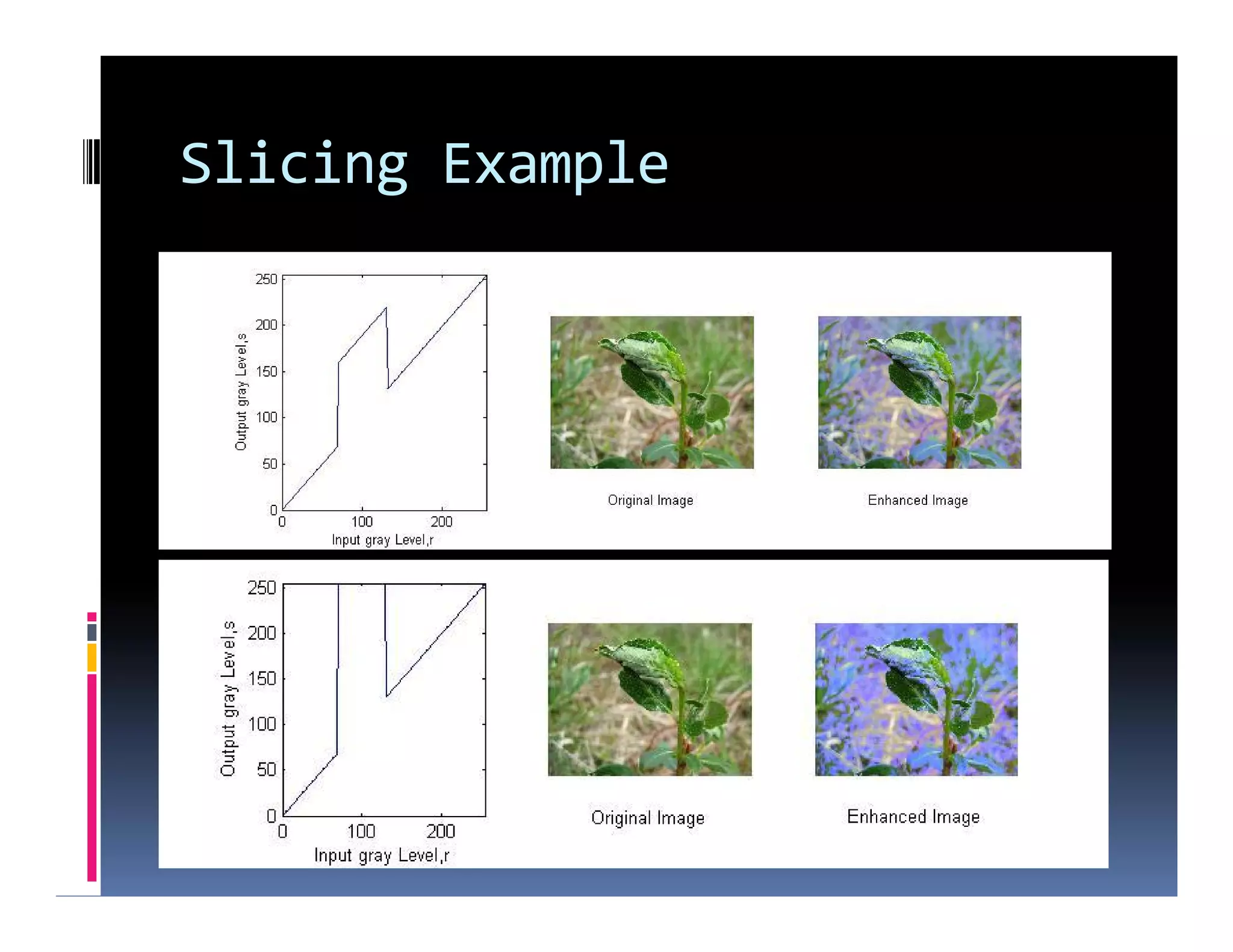
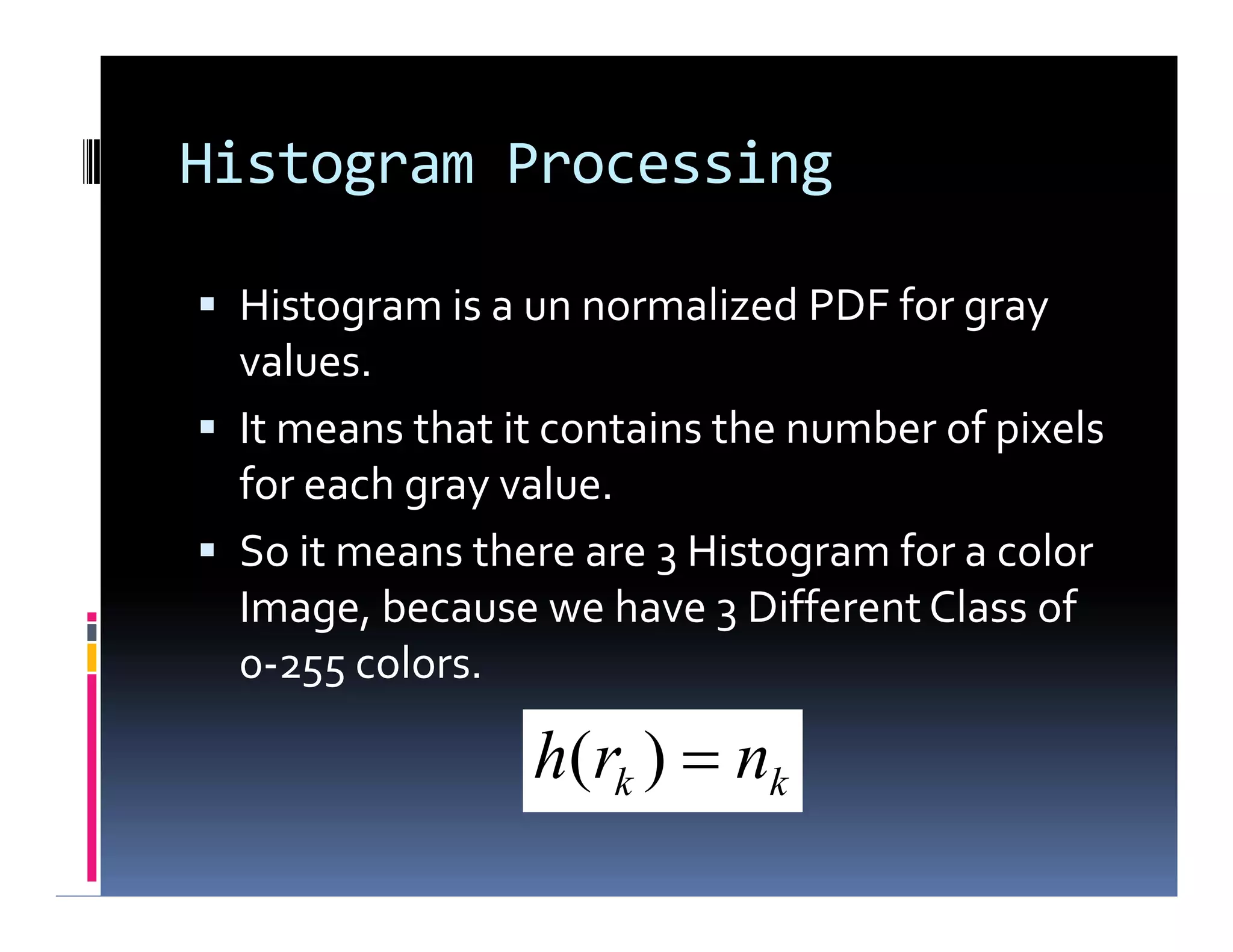
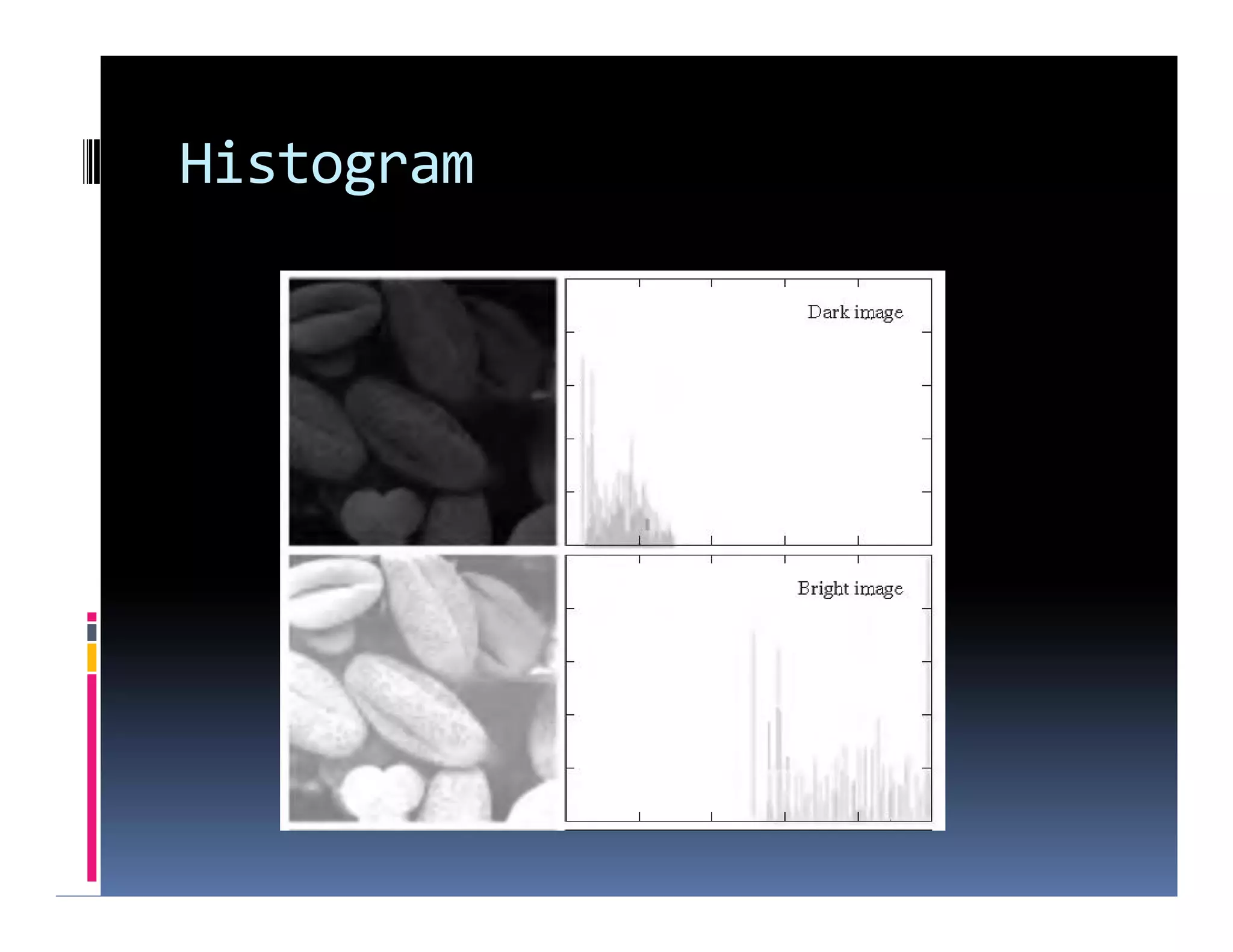


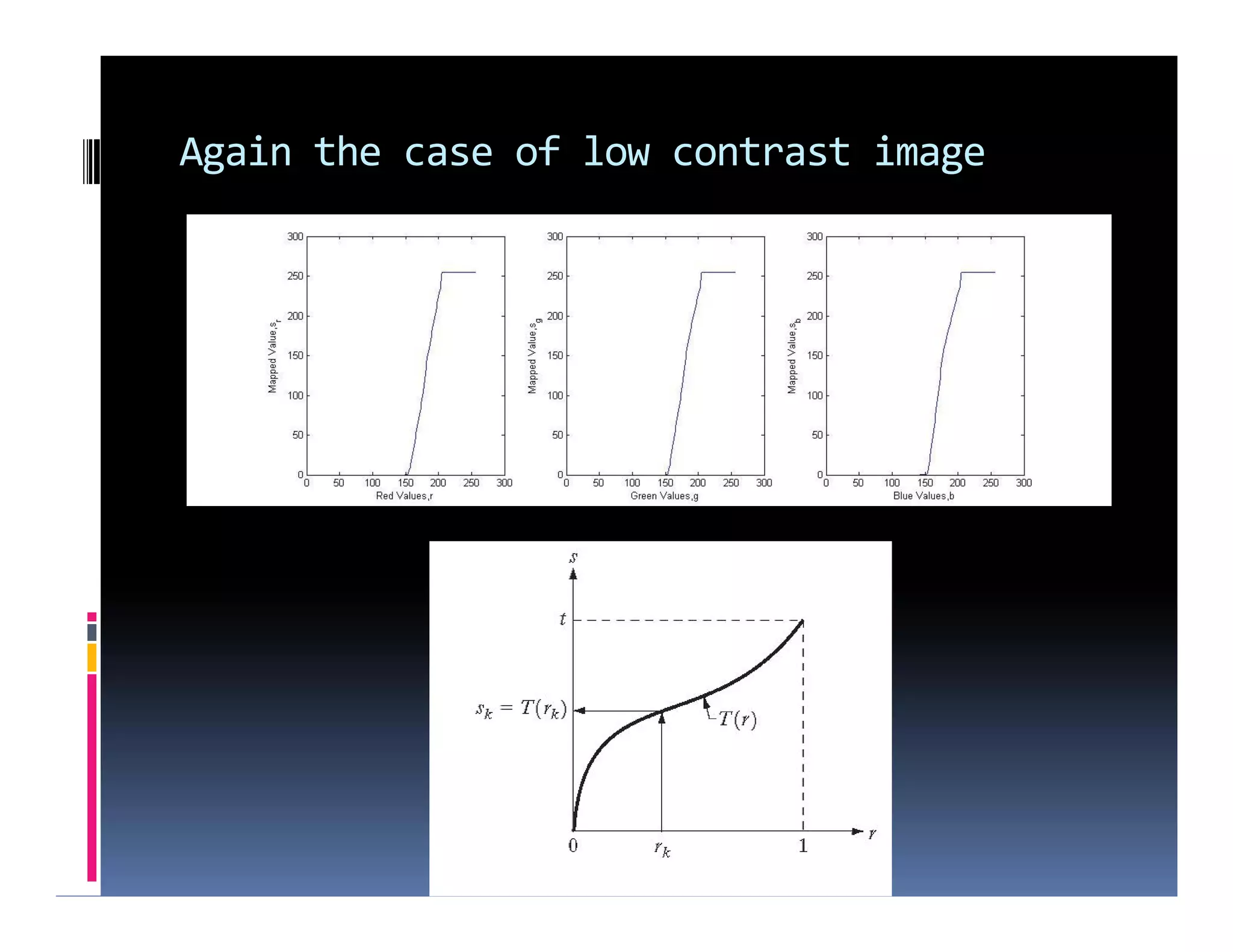
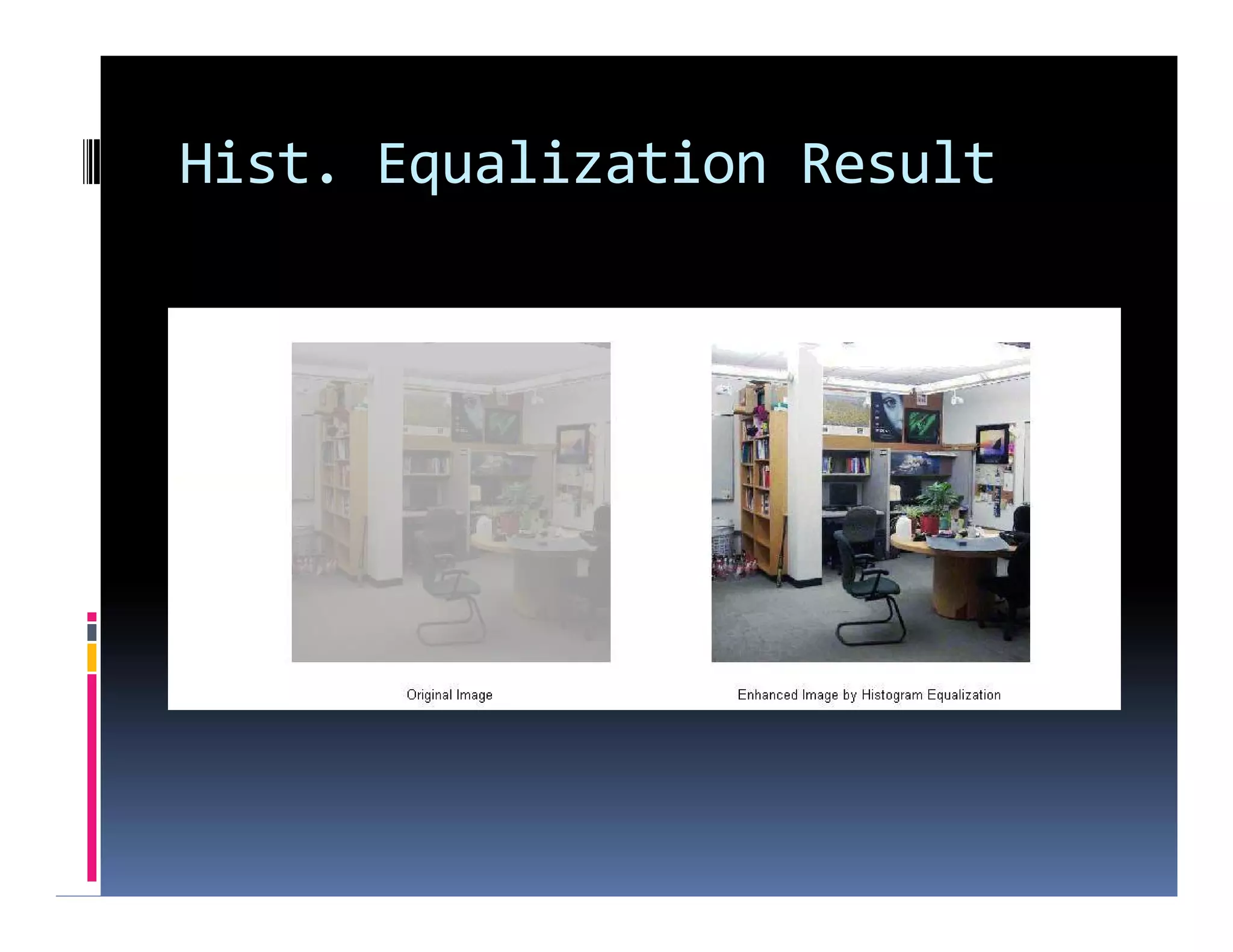

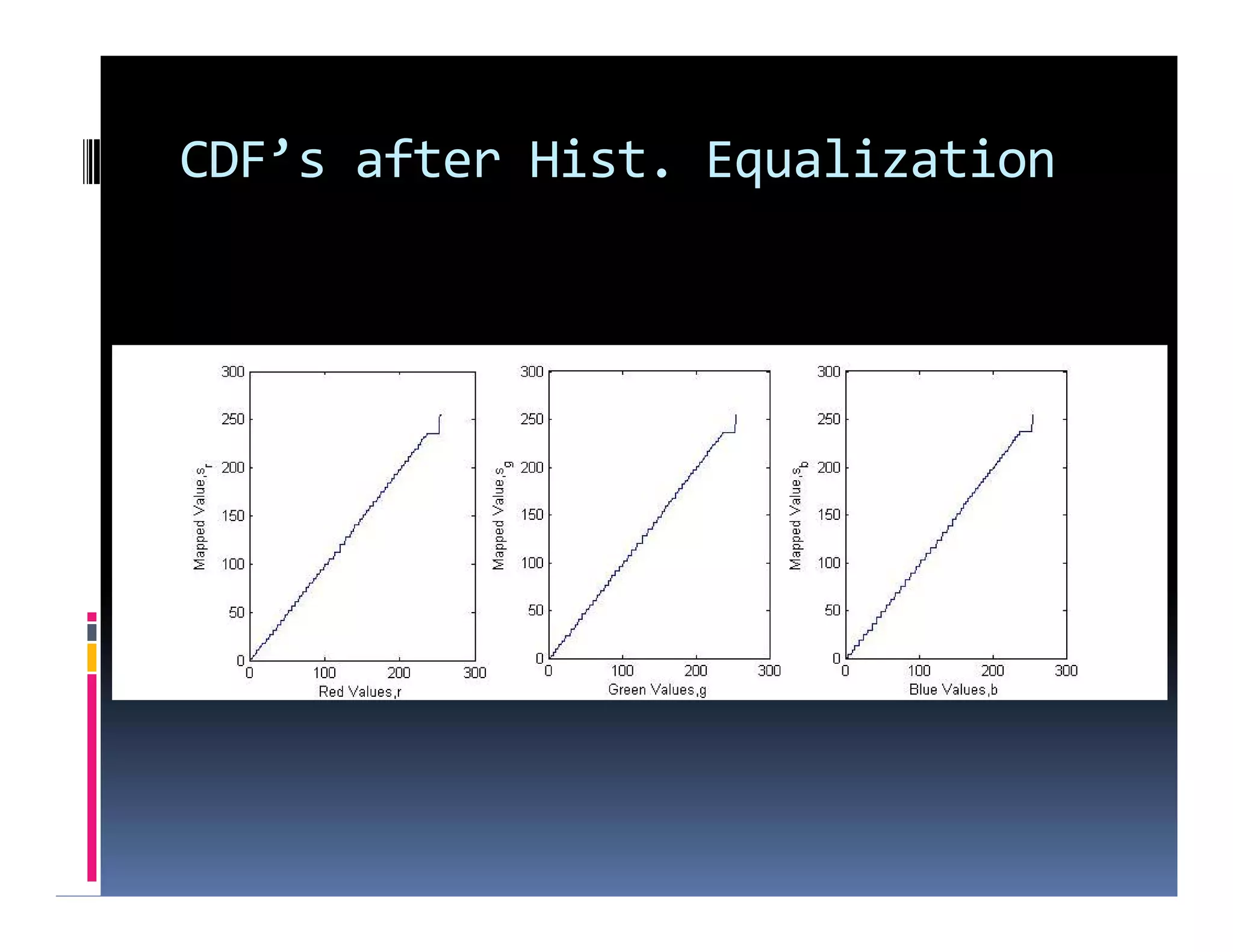
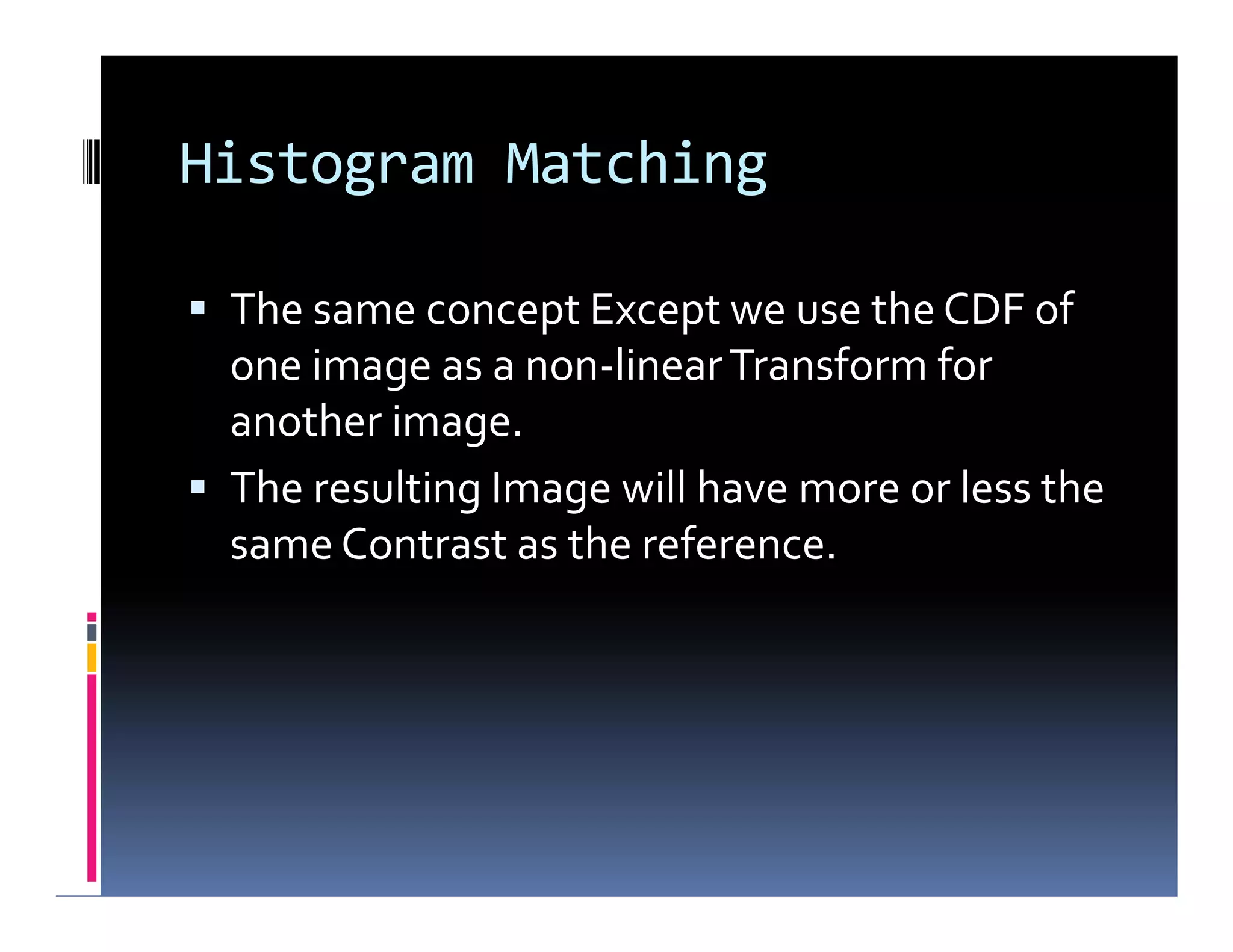
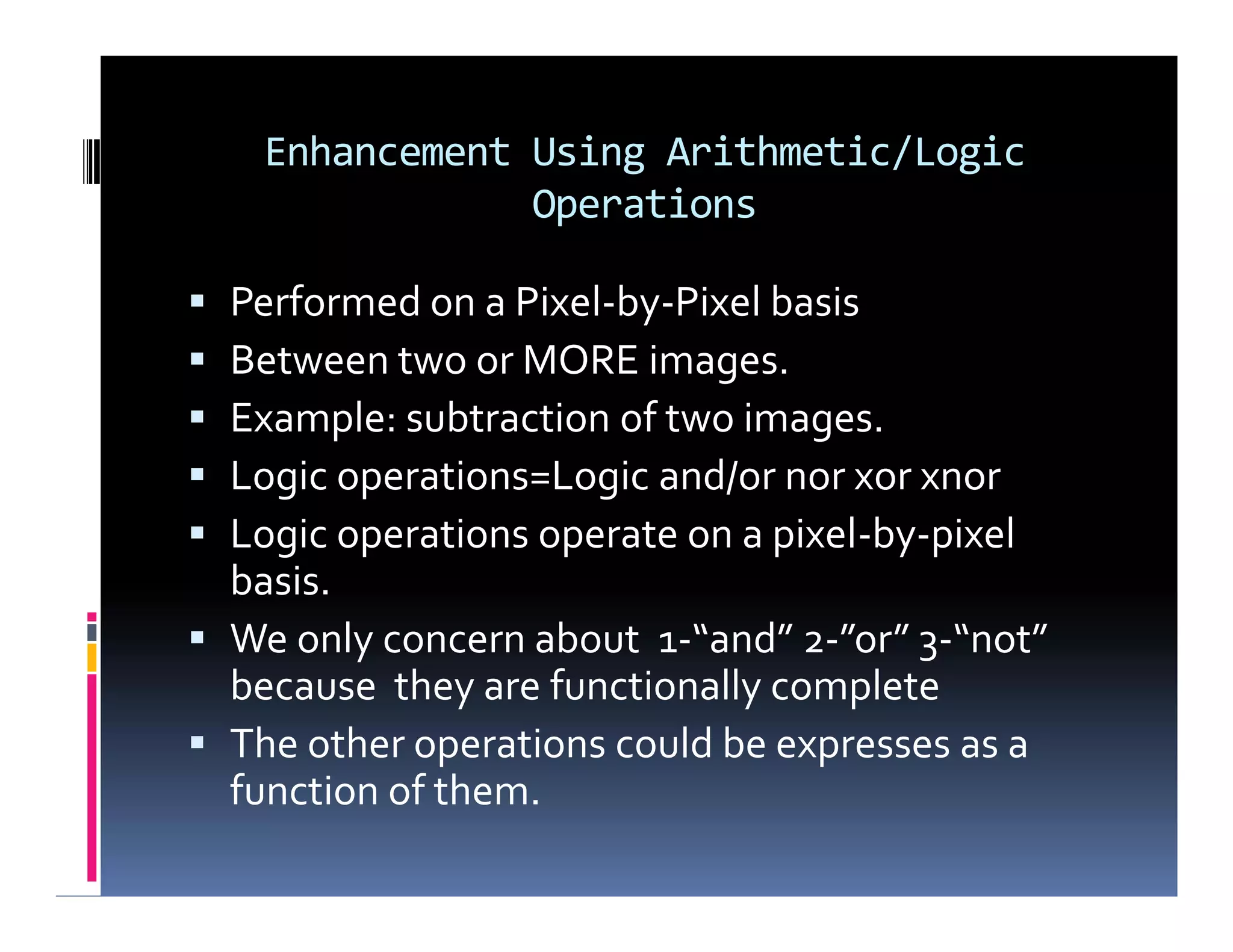
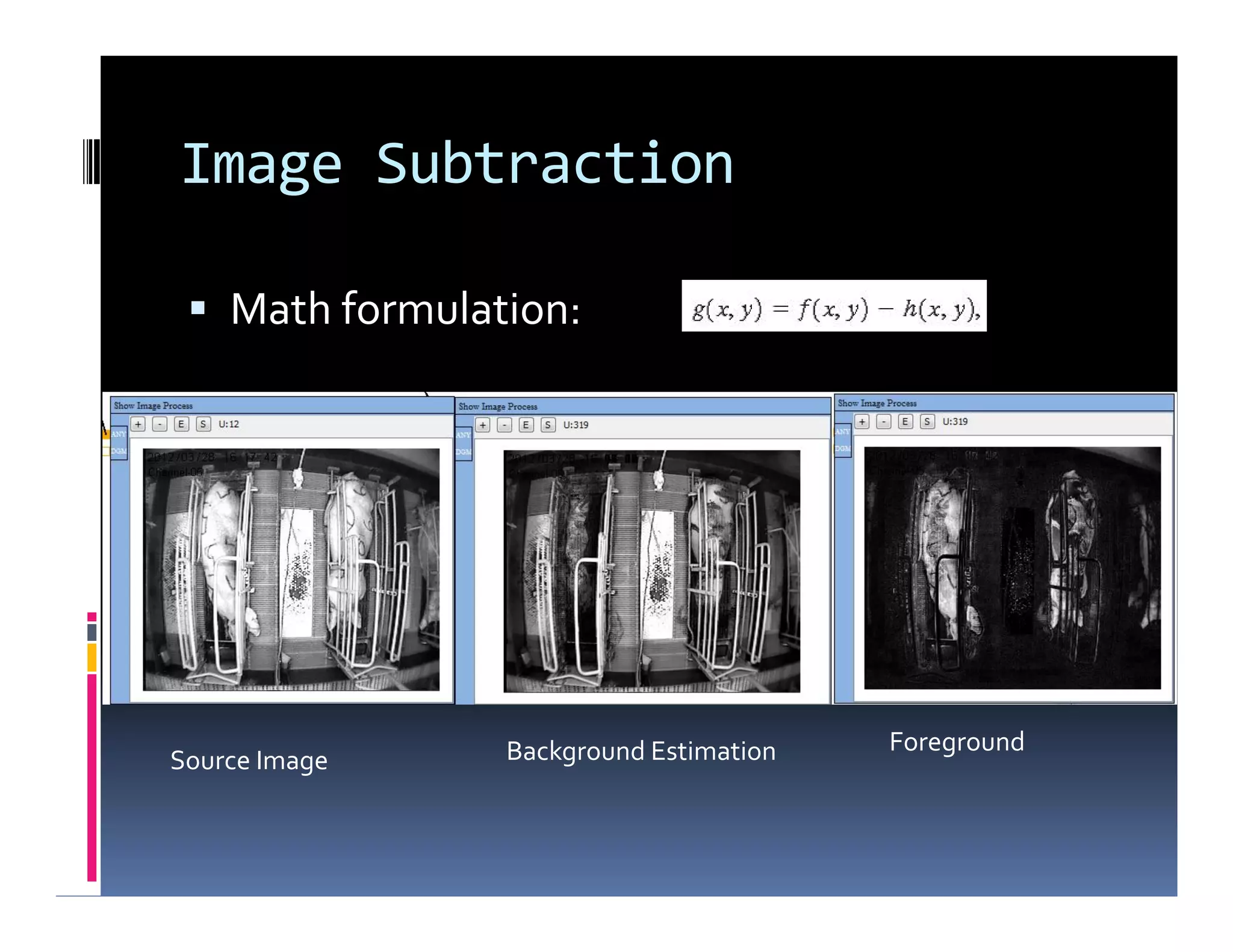
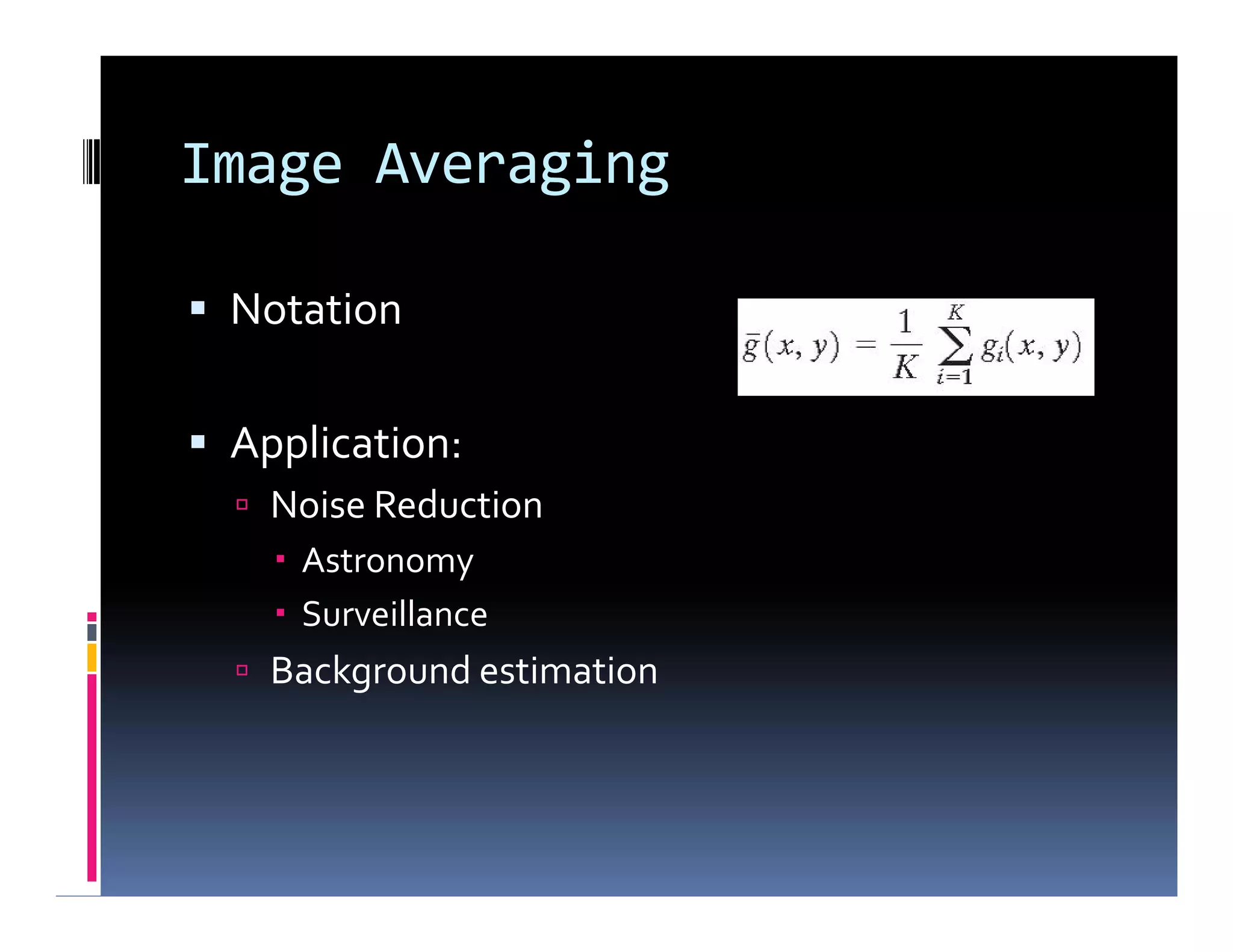
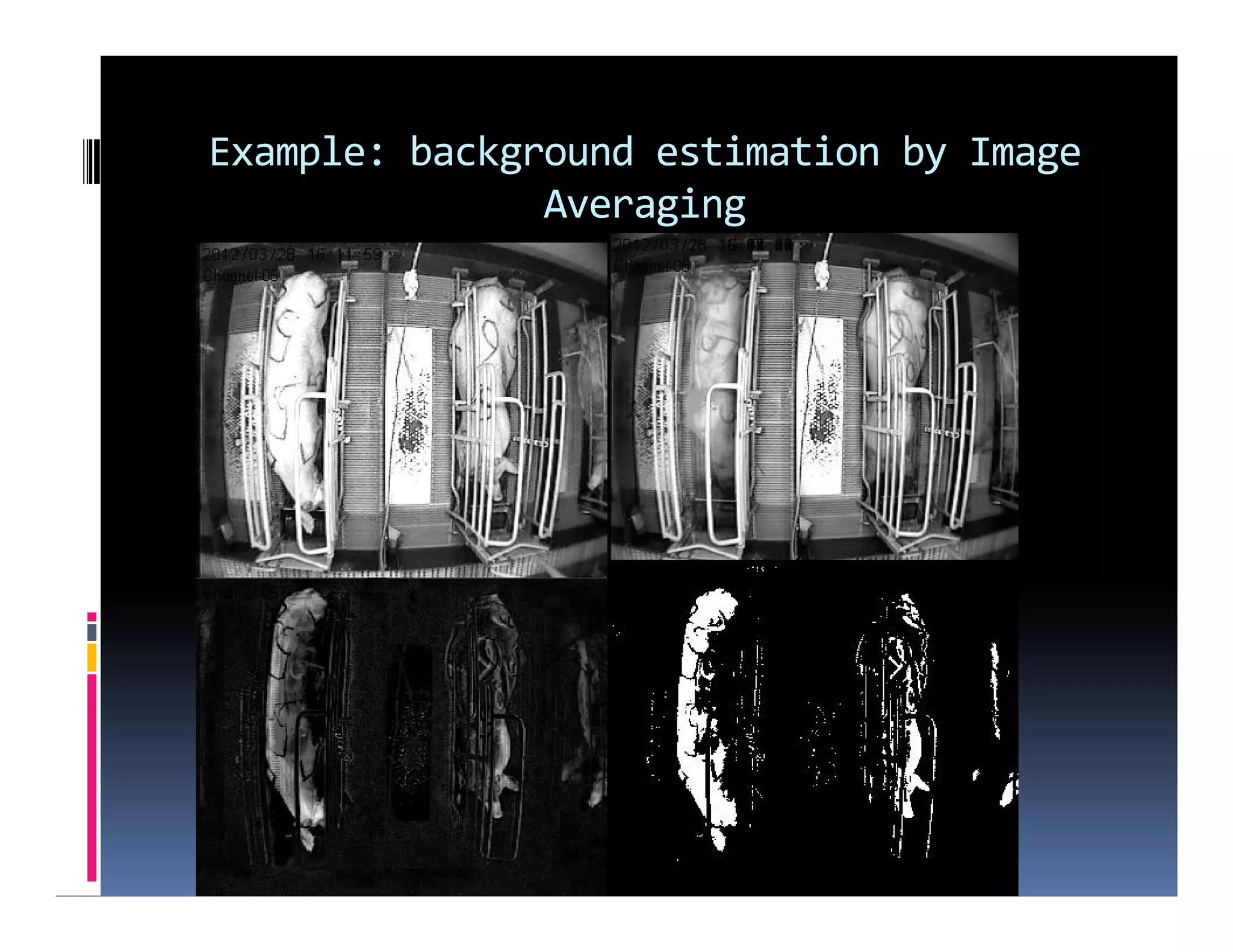
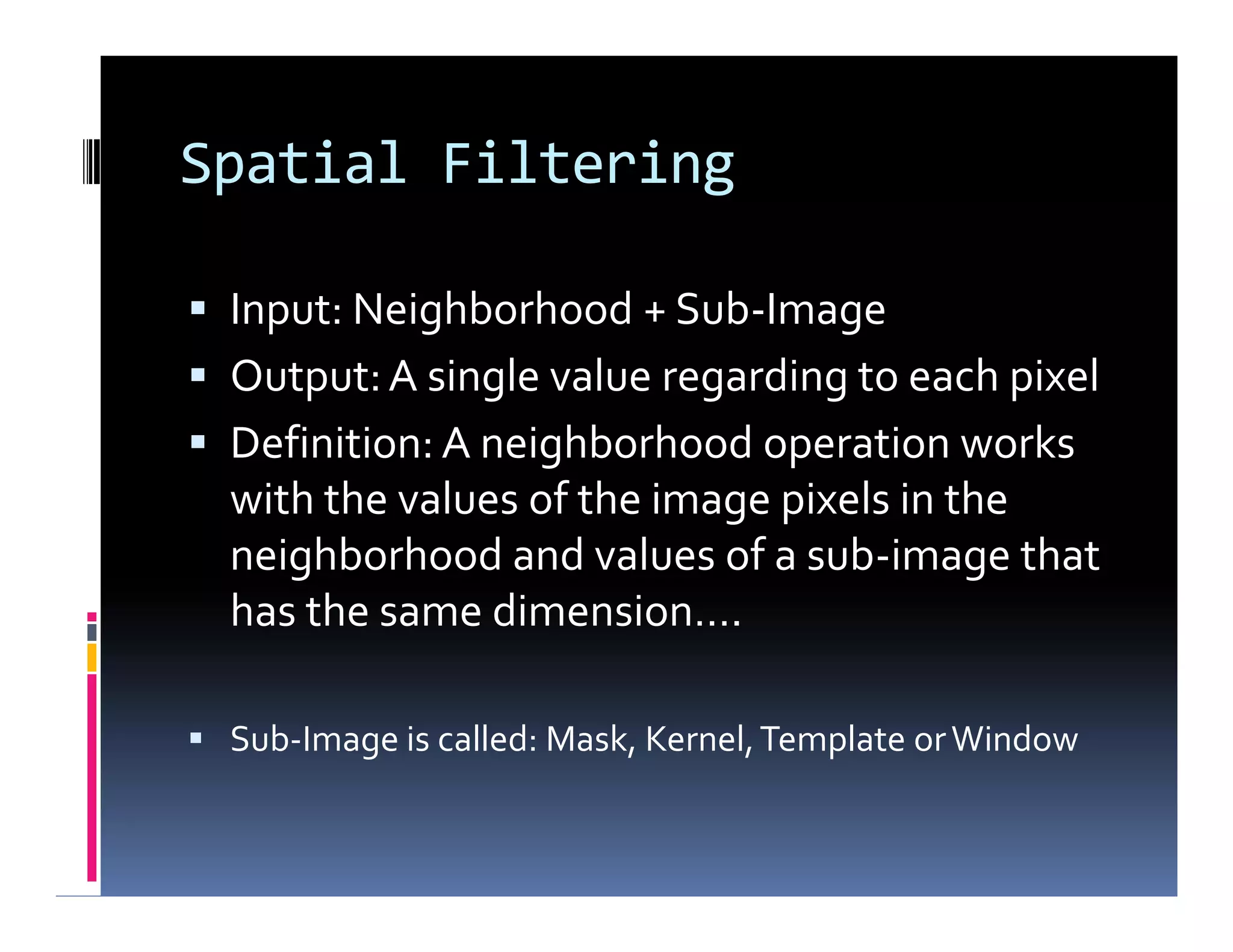
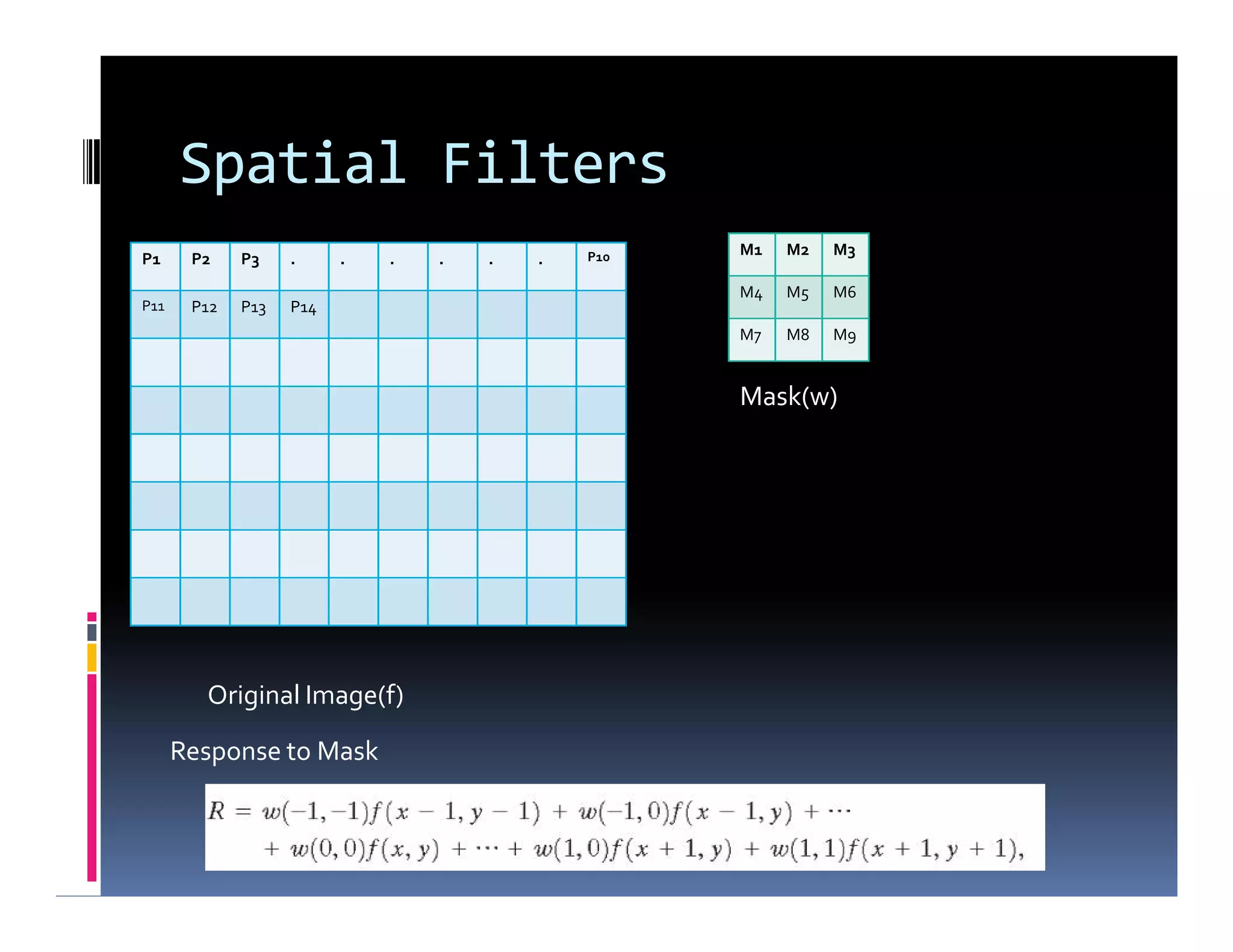
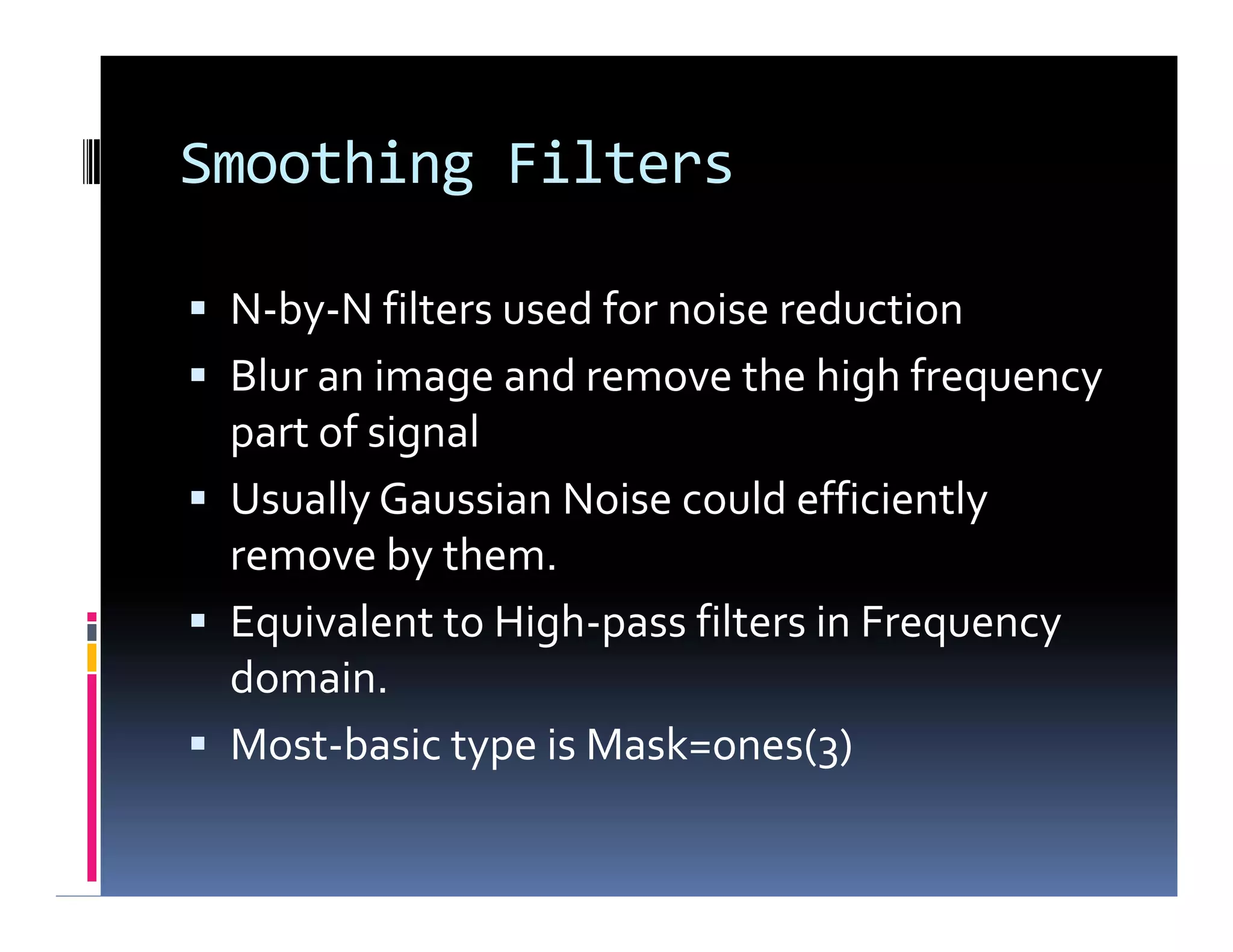
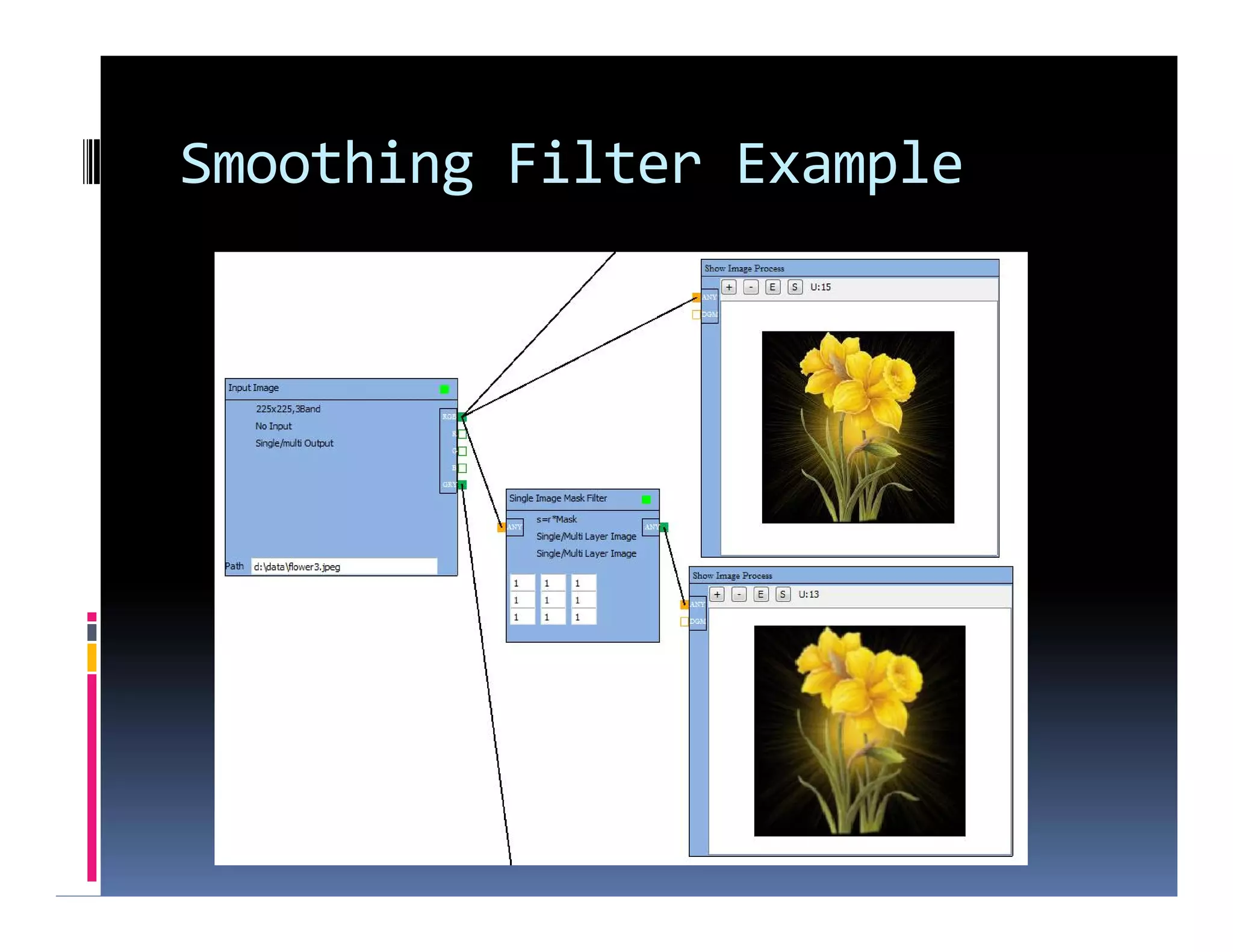

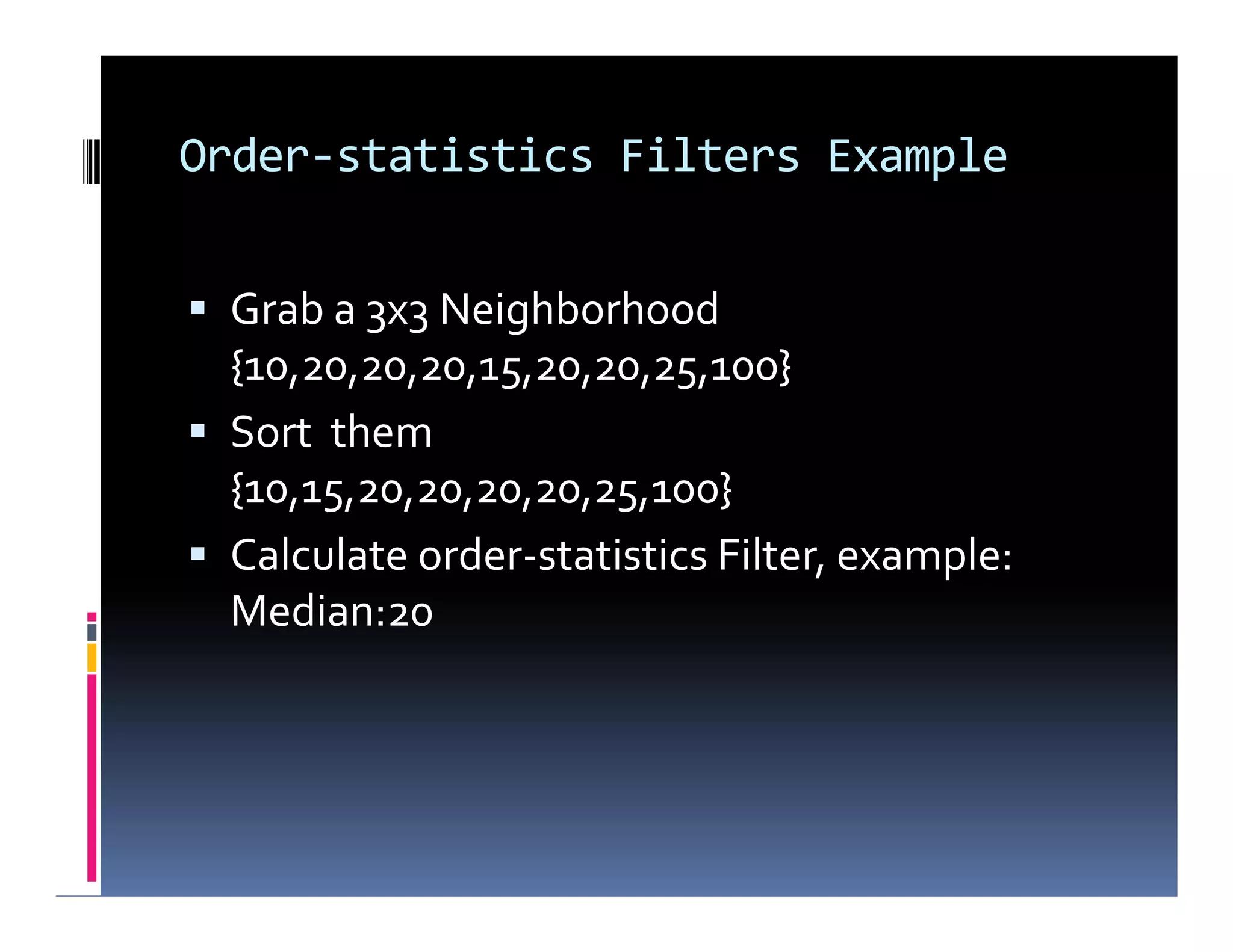
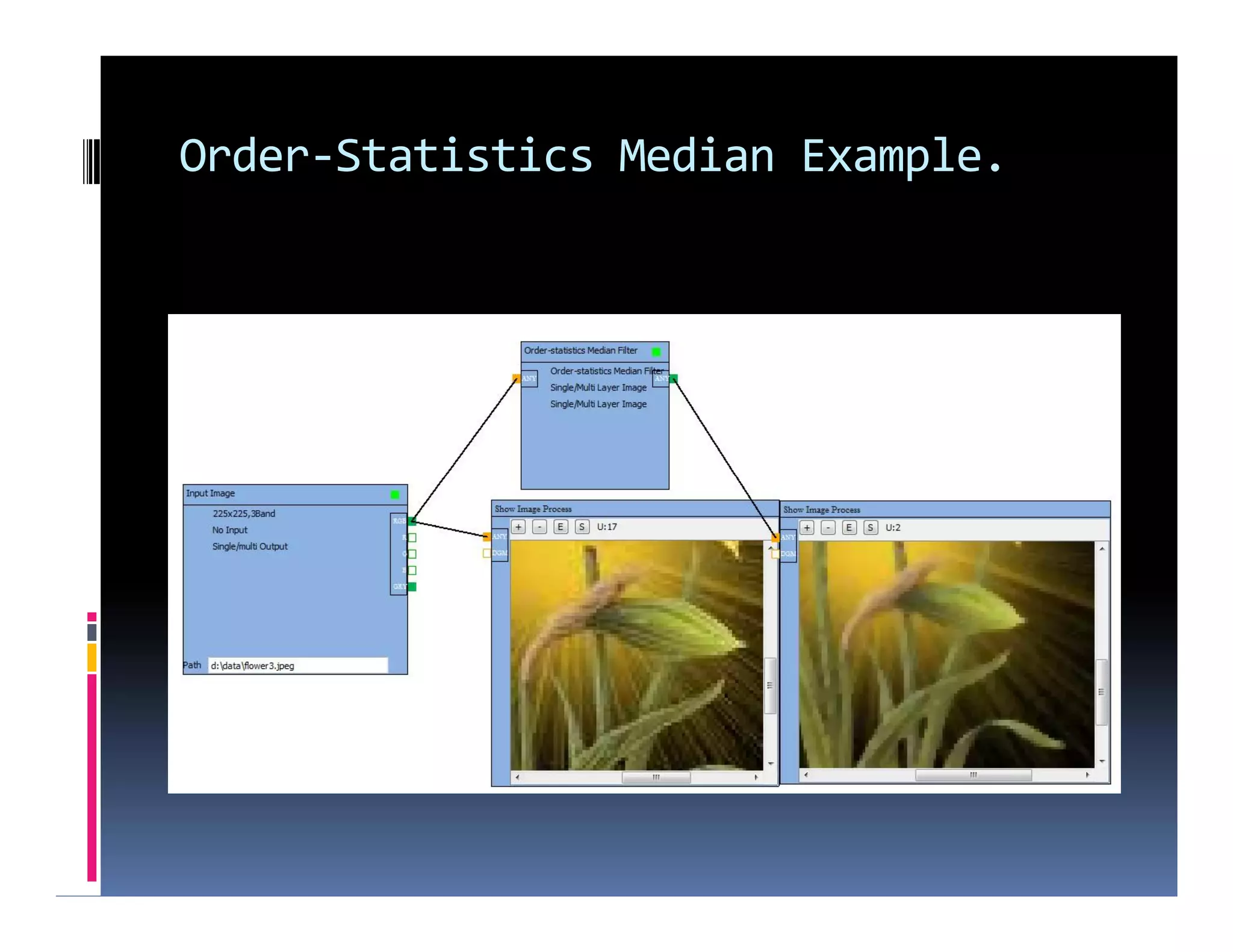
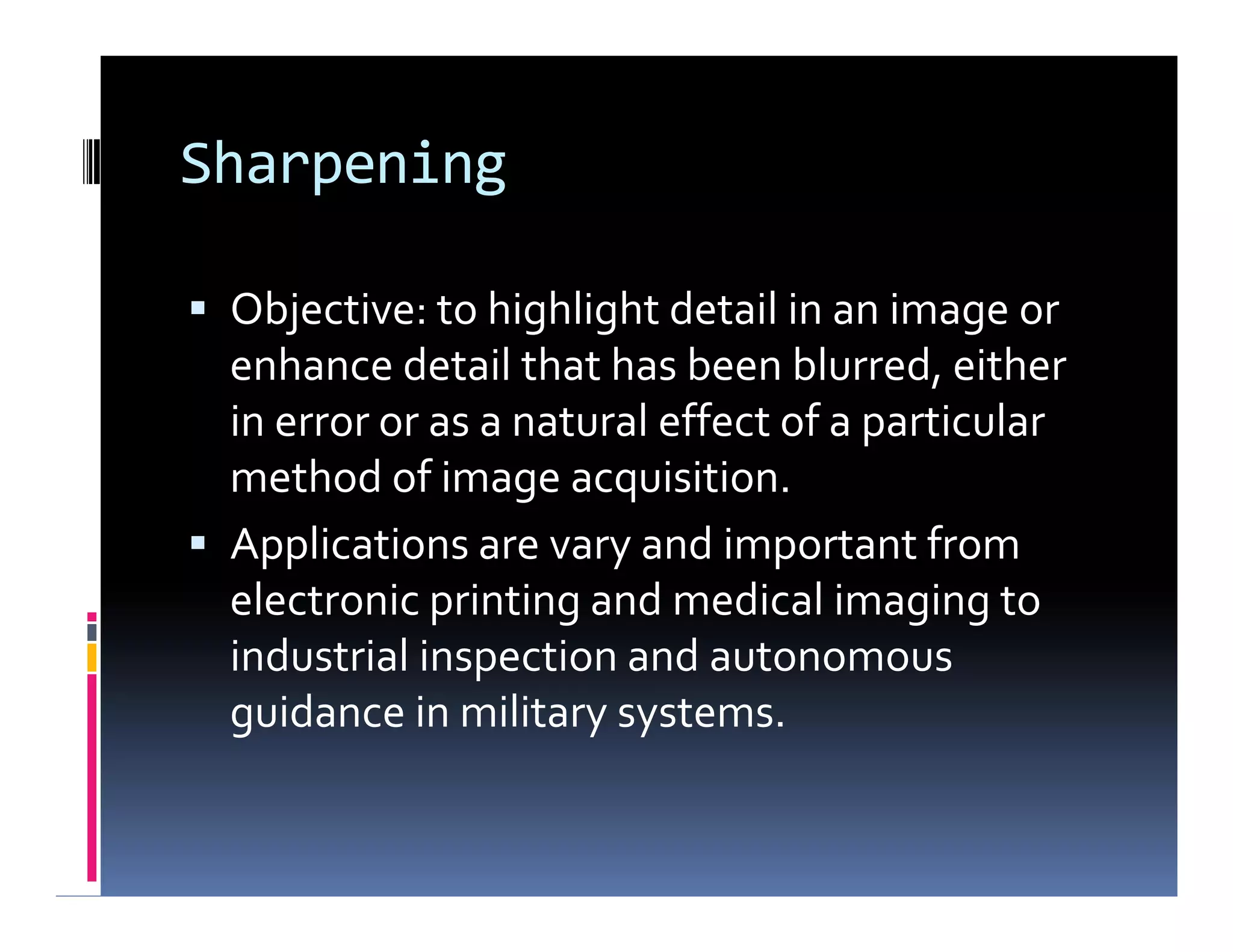
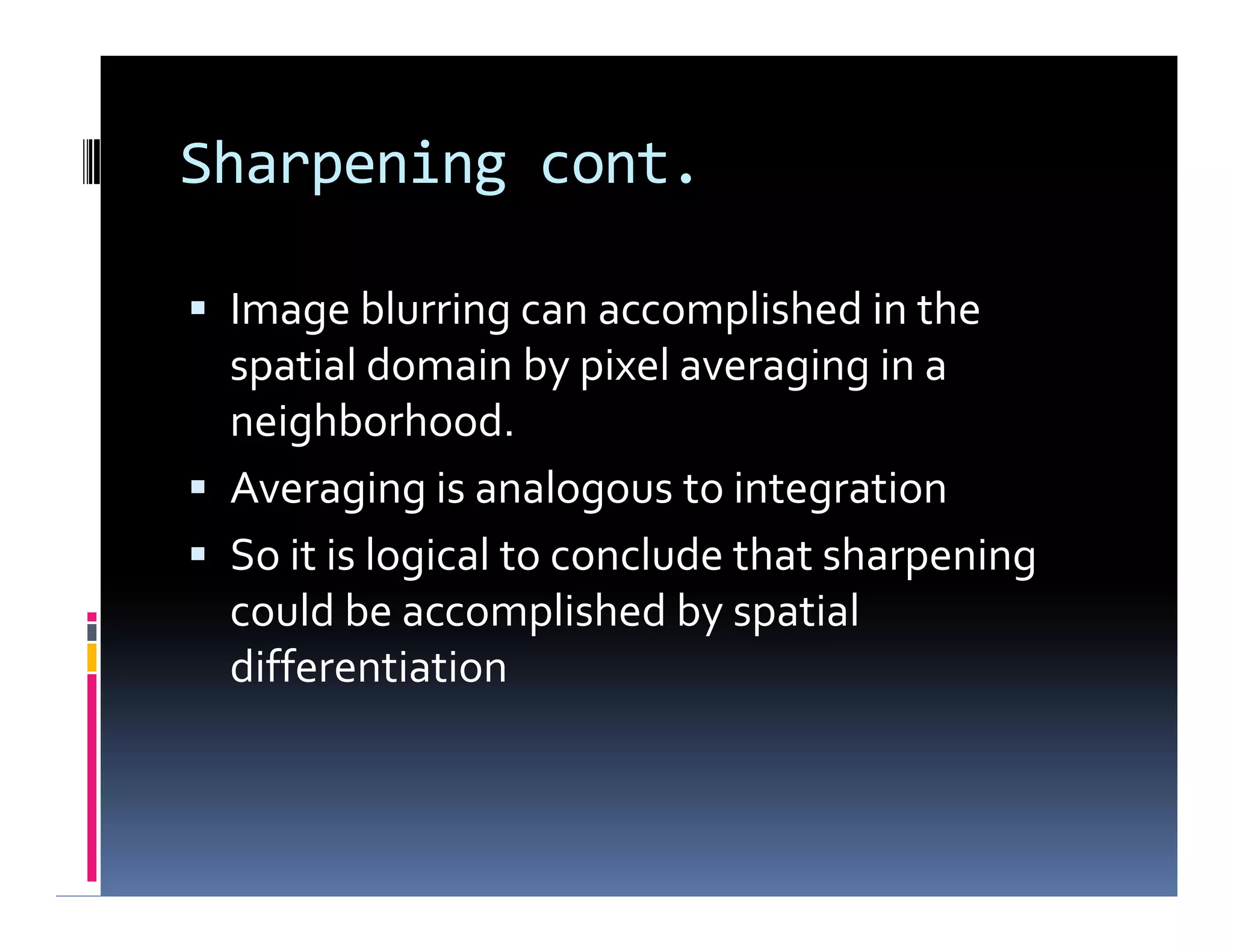
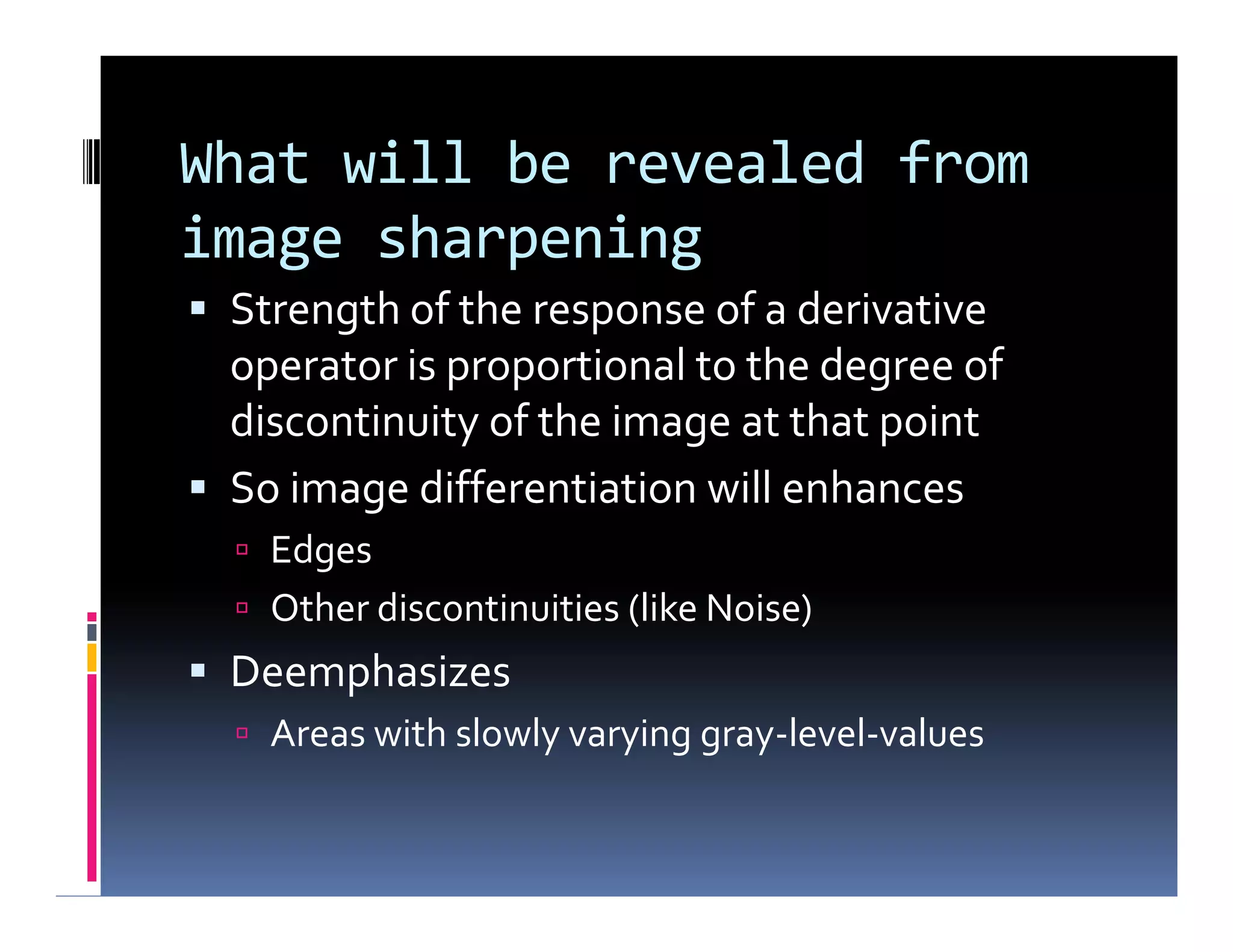
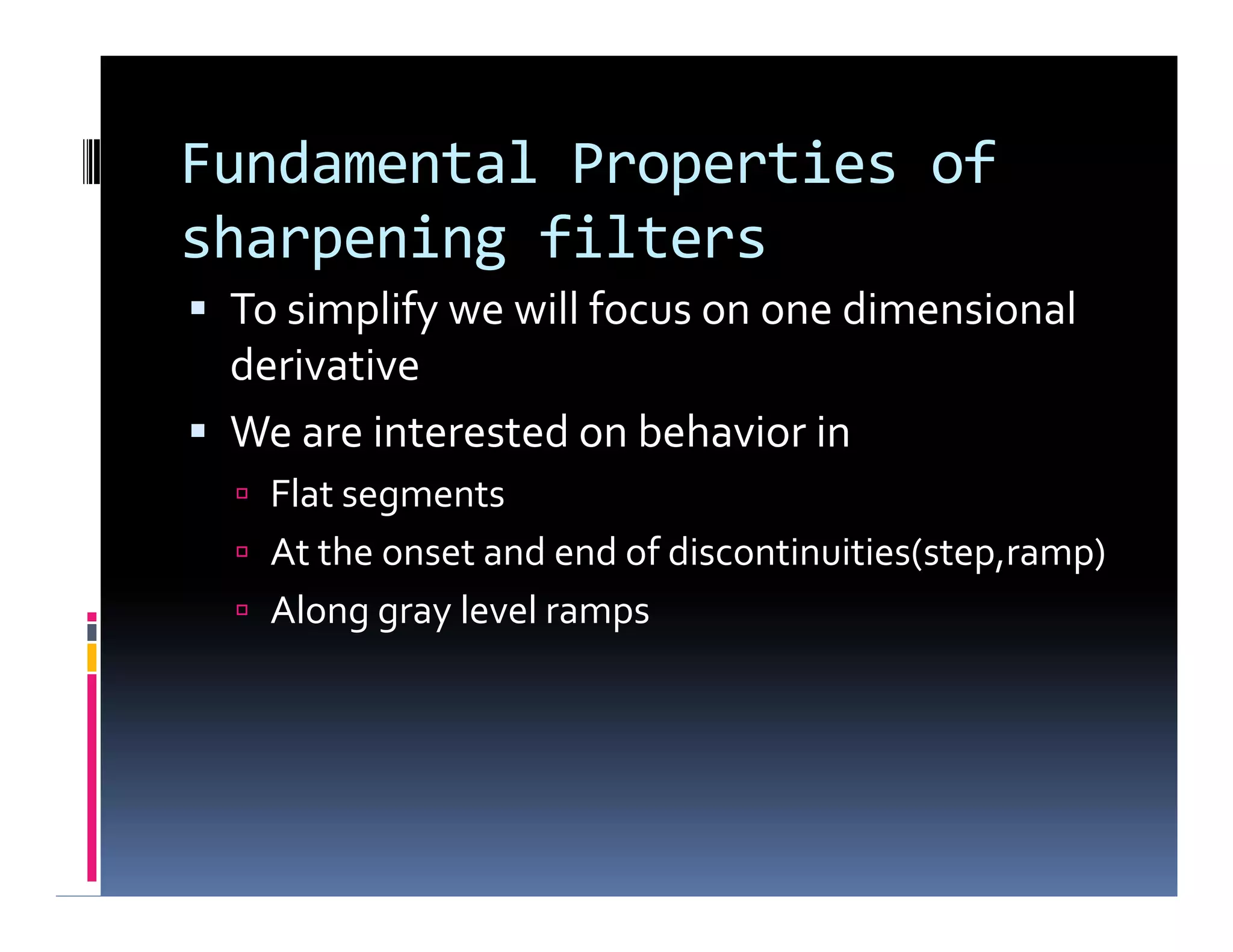

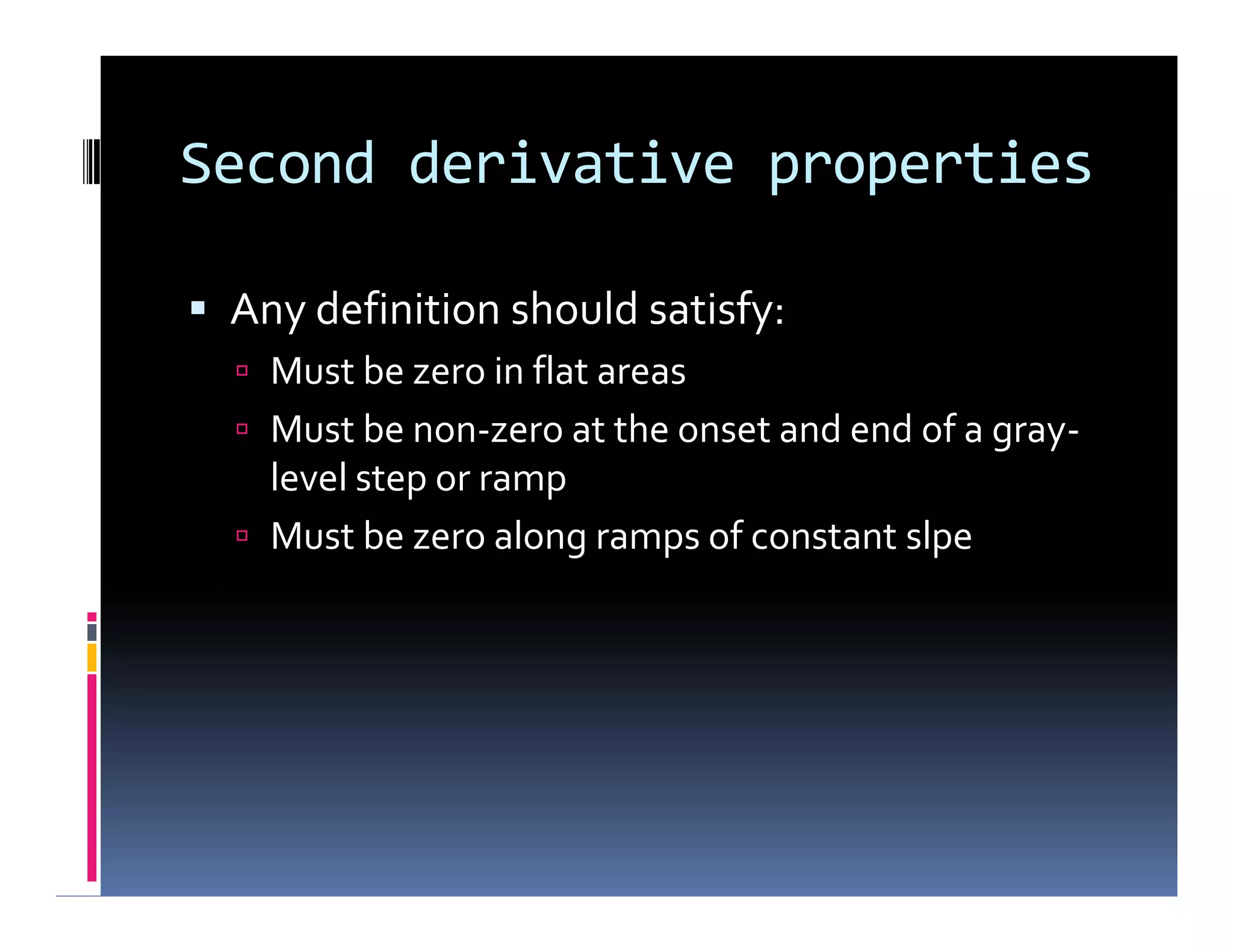

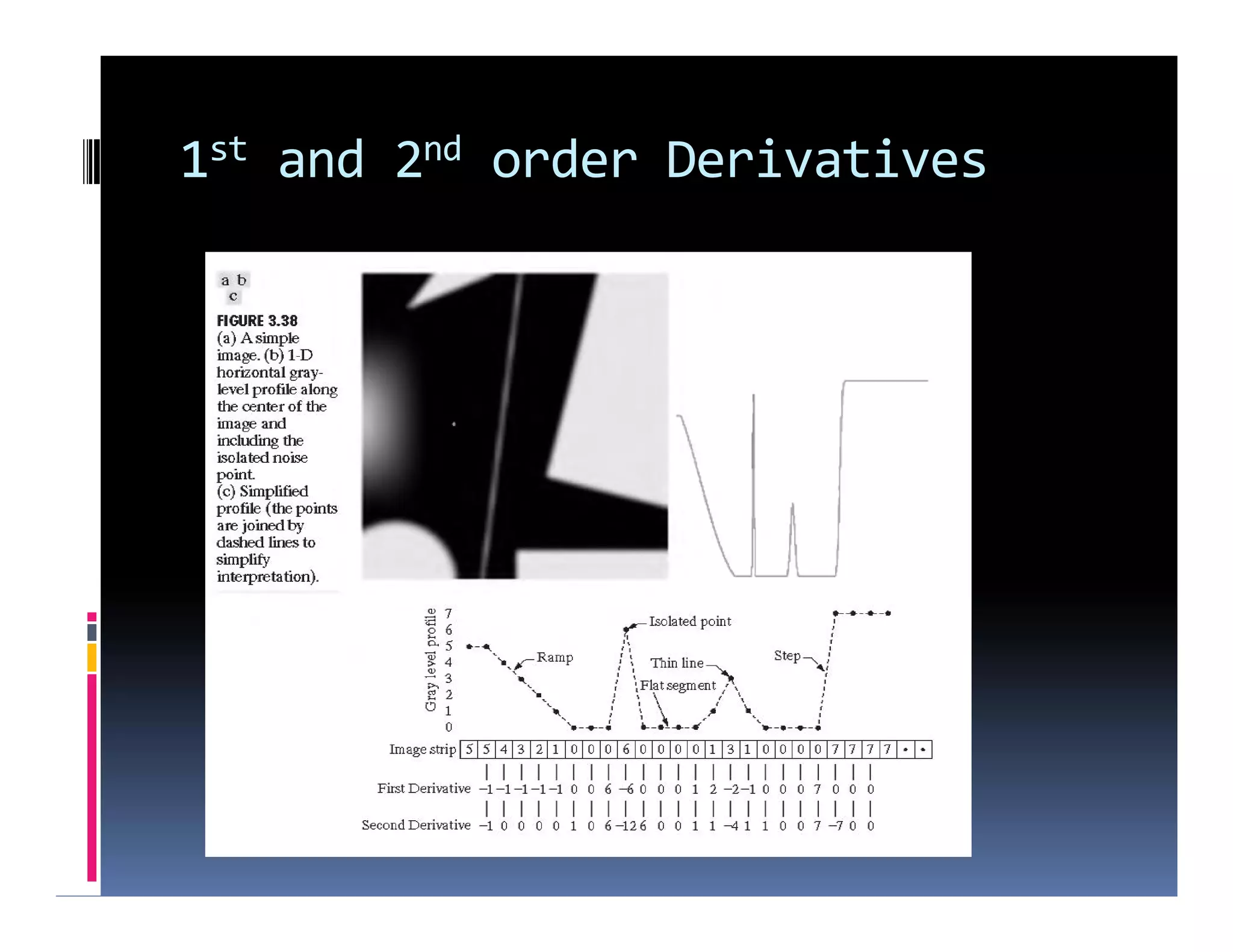
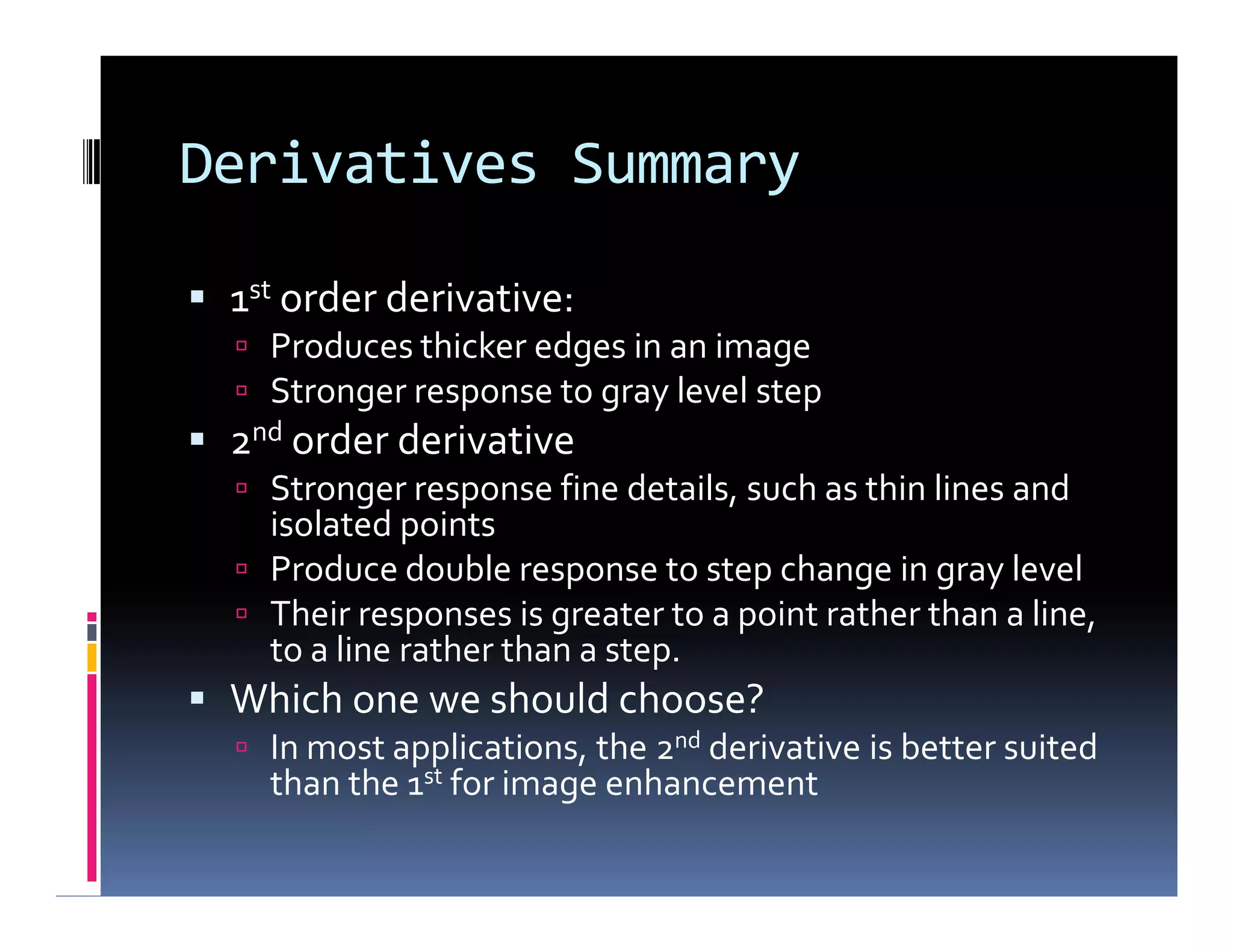
![Isotropic filters
Their response is independent of the
discontinuities in the image to which the filter
applied.
So Isotropic filters are rotation invariant, so
rotating and image and then applying the
filter is same as applying the filter then
rotating the result.
It can be shown(Rosenfeld and Kak [1982])
that the simplest isotropic derivative
operation is Laplacian.
Their response is independent of the
discontinuities in the image to which the filter
applied.
So Isotropic filters are rotation invariant, so
rotating and image and then applying the
filter is same as applying the filter then
rotating the result.
It can be shown(Rosenfeld and Kak [1982])
that the simplest isotropic derivative
operation is Laplacian.](https://image.slidesharecdn.com/4-imageenhancementinspatialdomain-191207084842/75/4-image-enhancement-in-spatial-domain-46-2048.jpg)
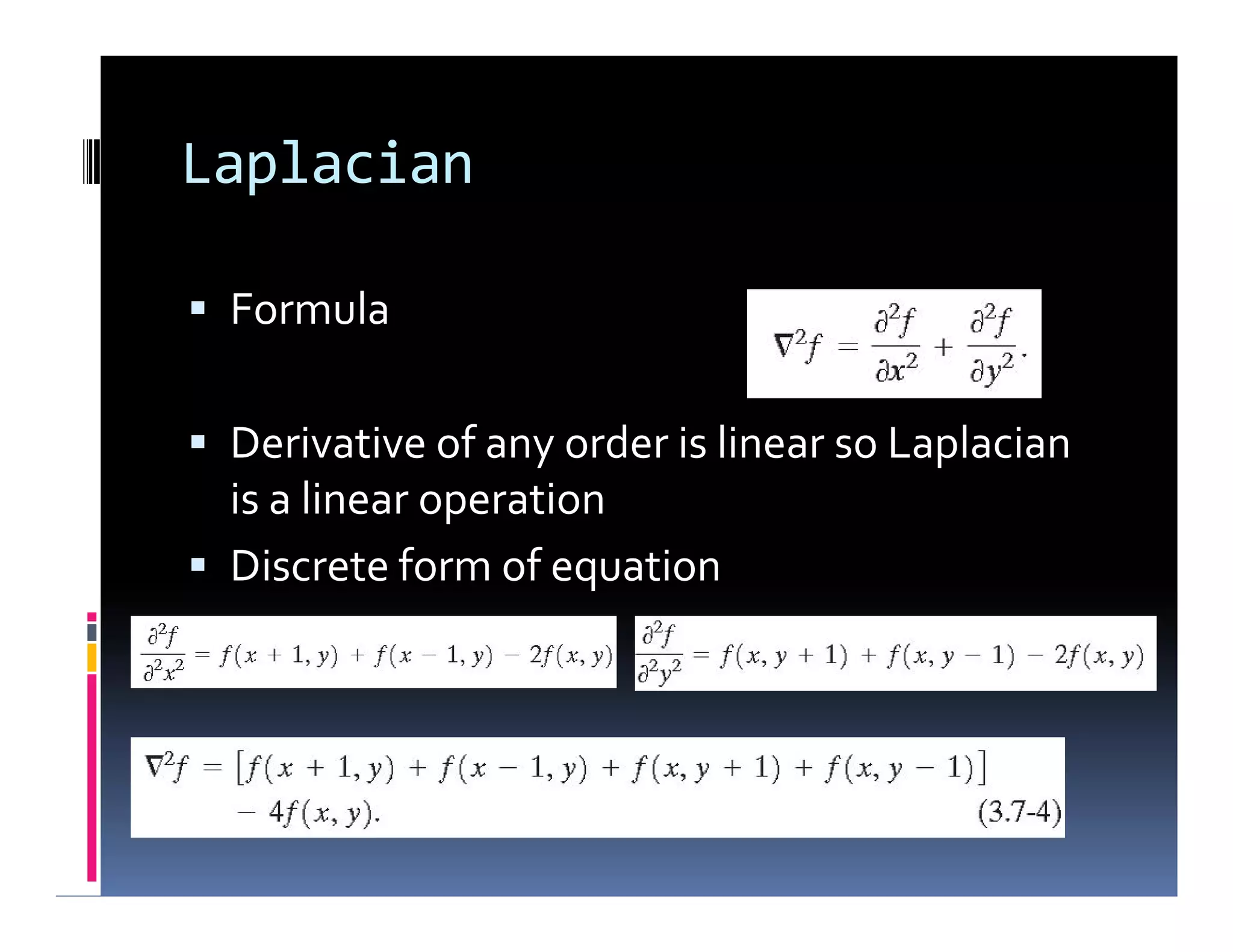
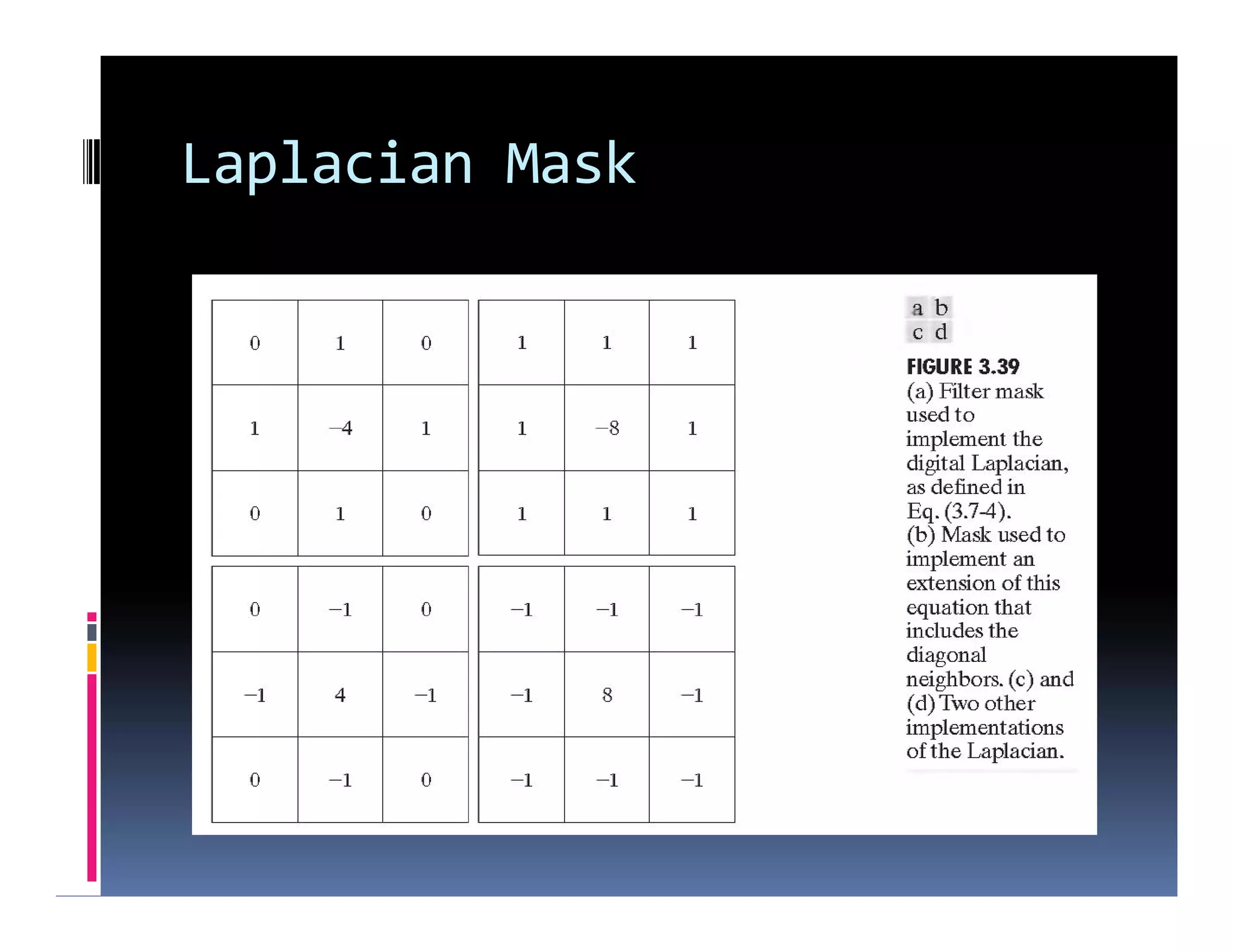
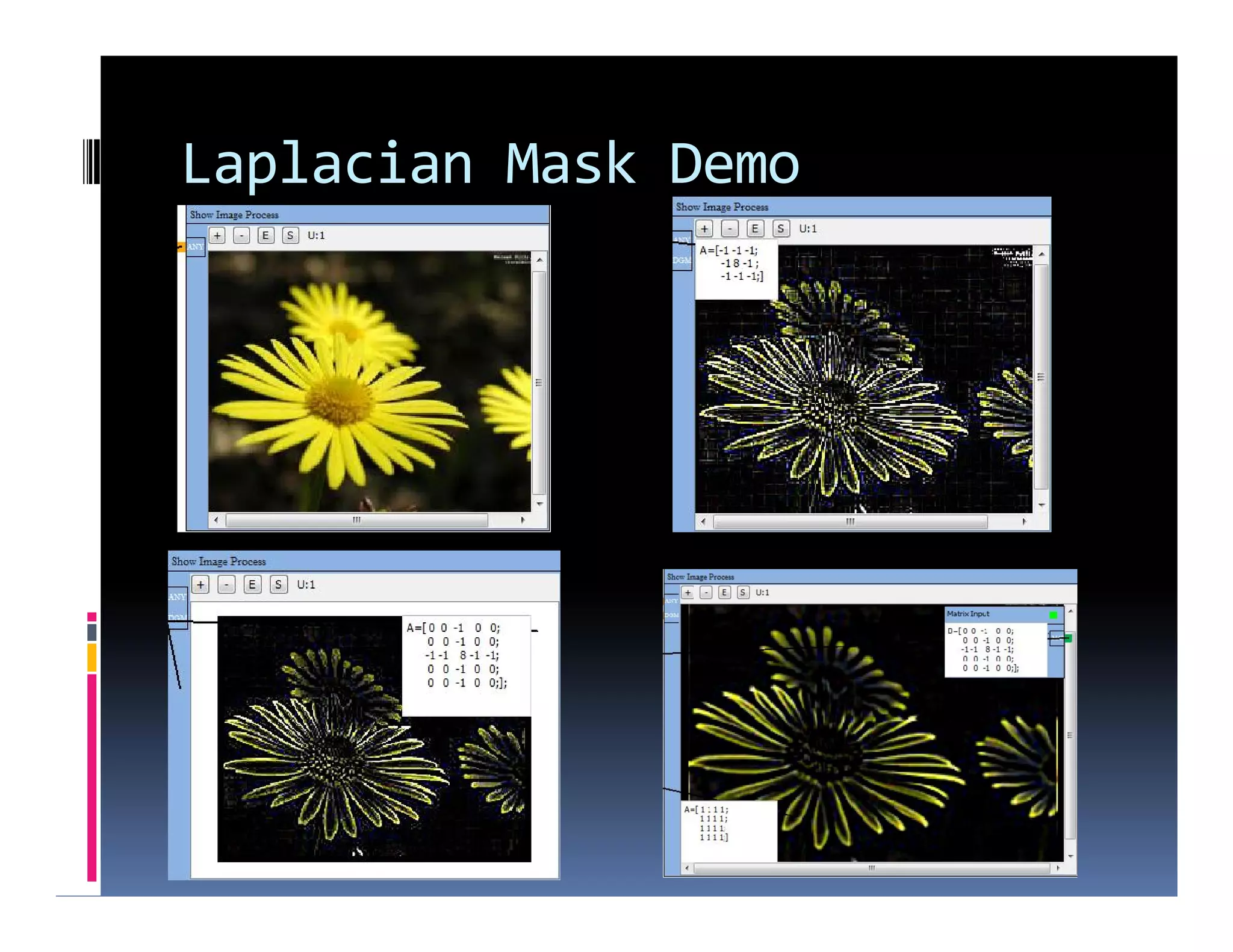
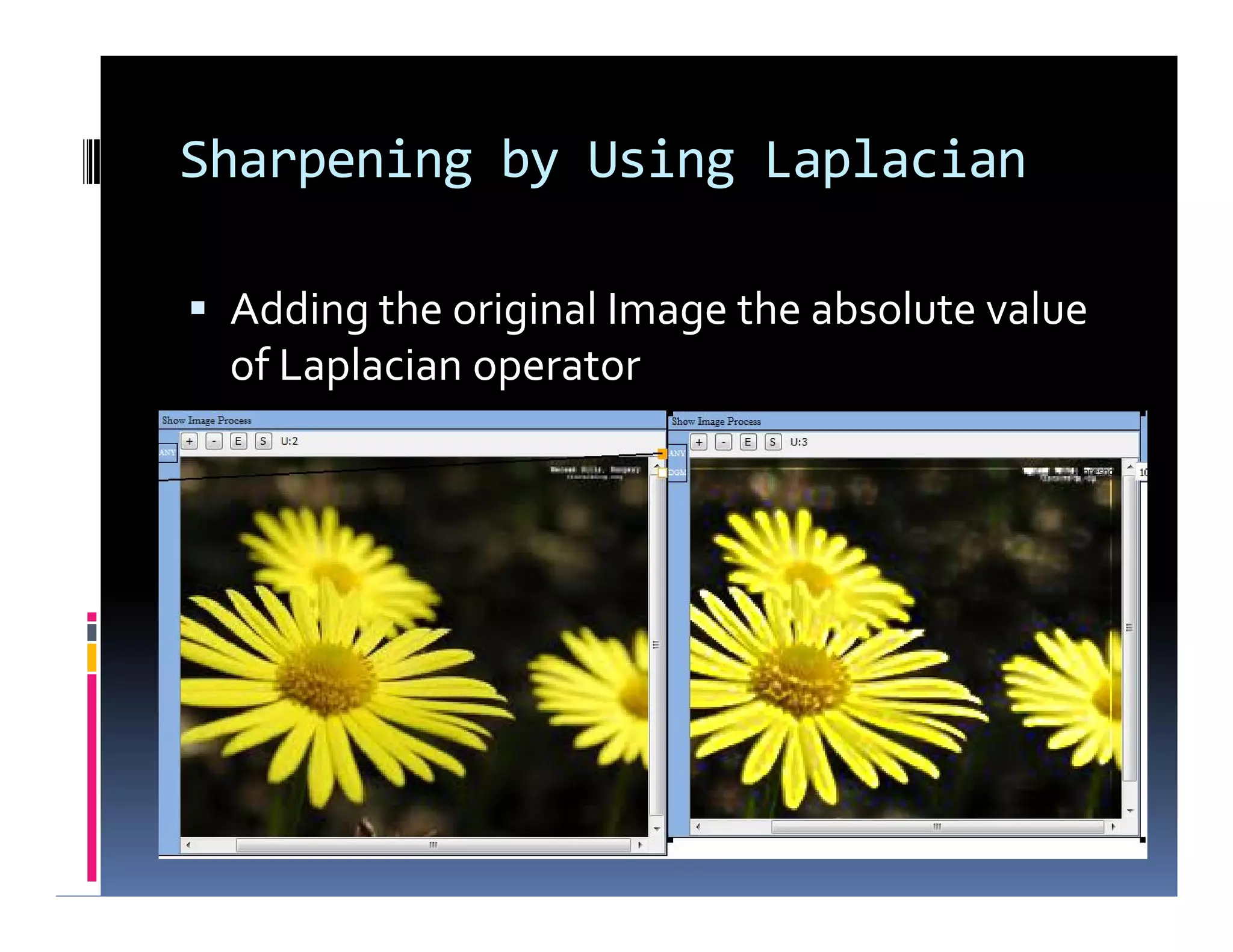
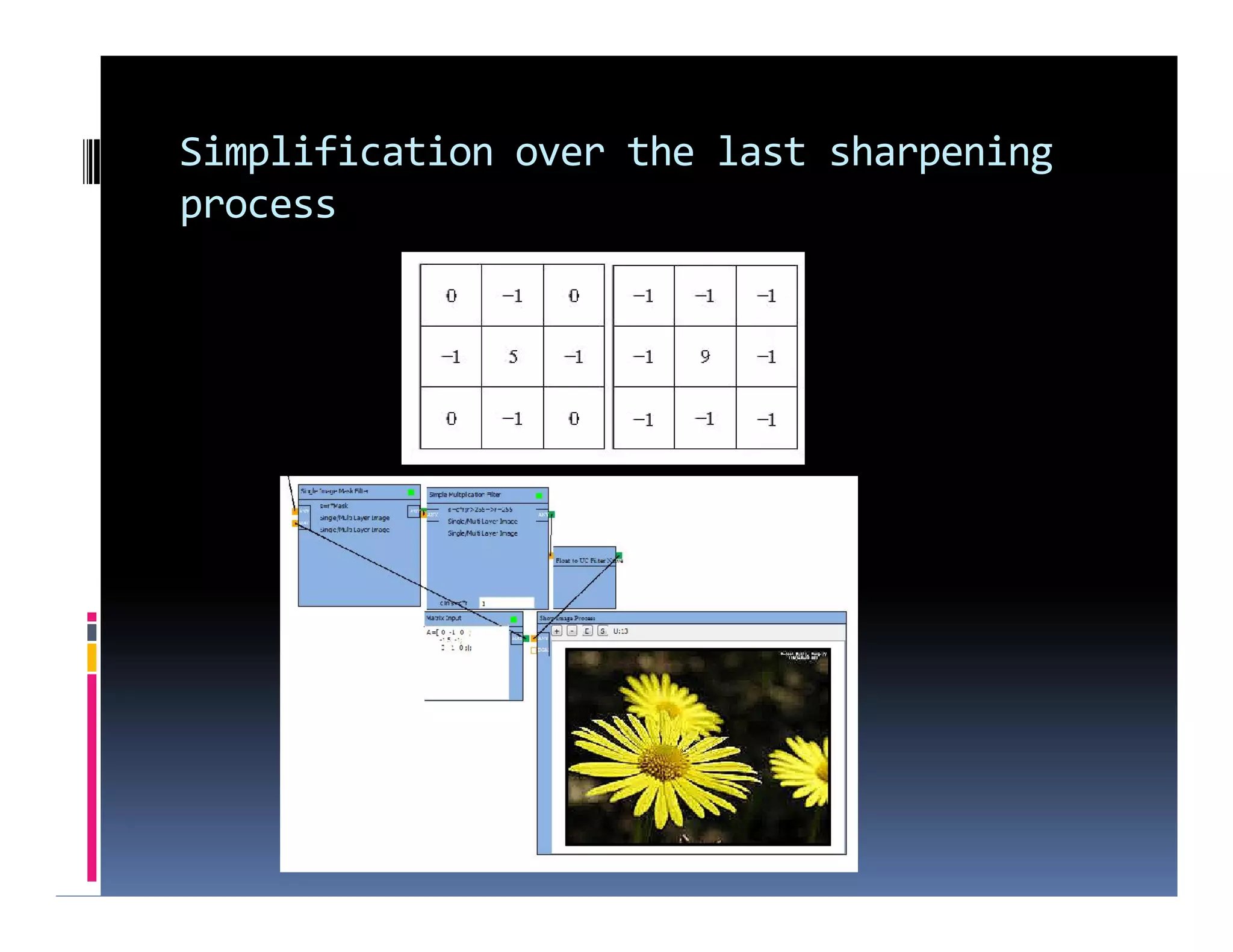
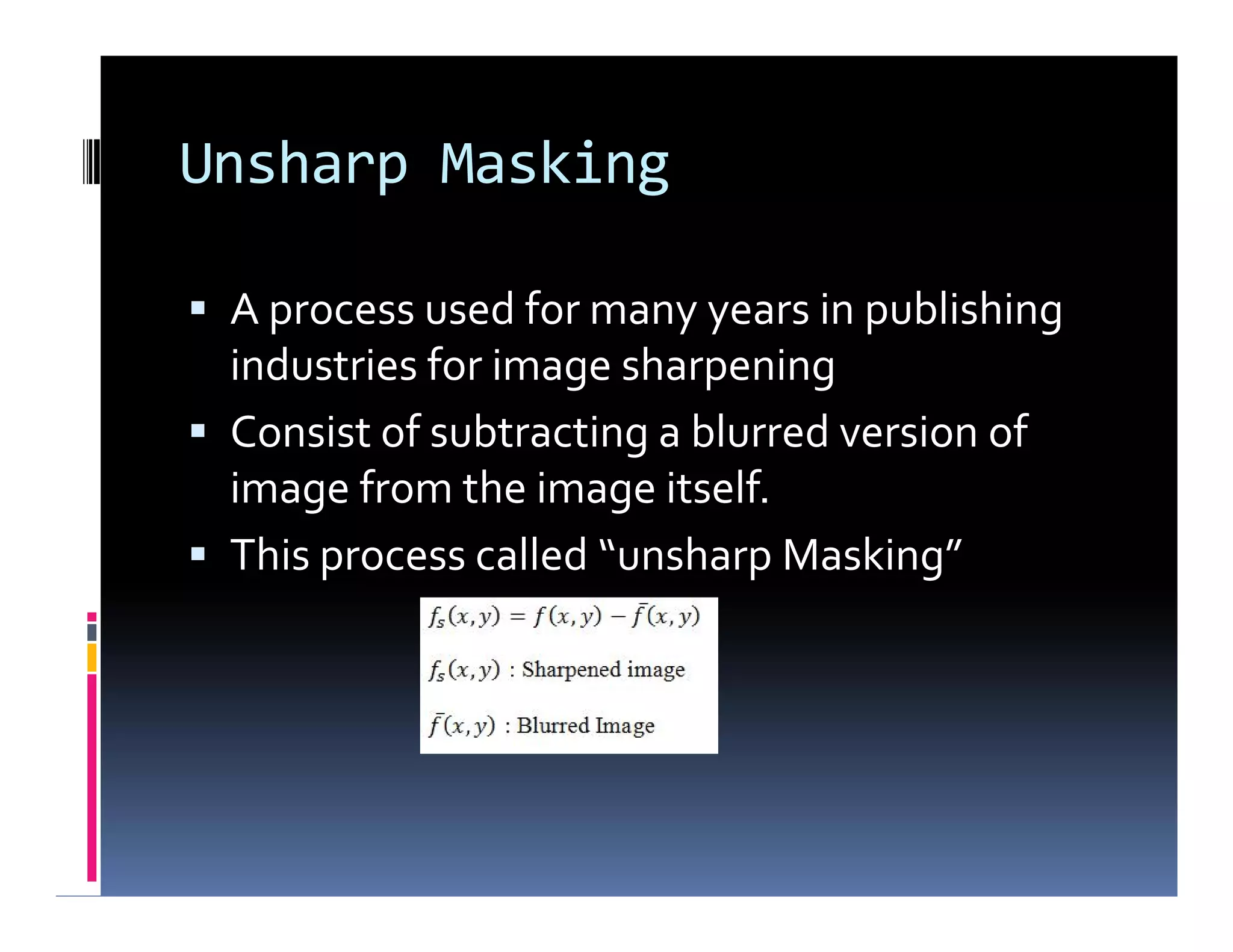
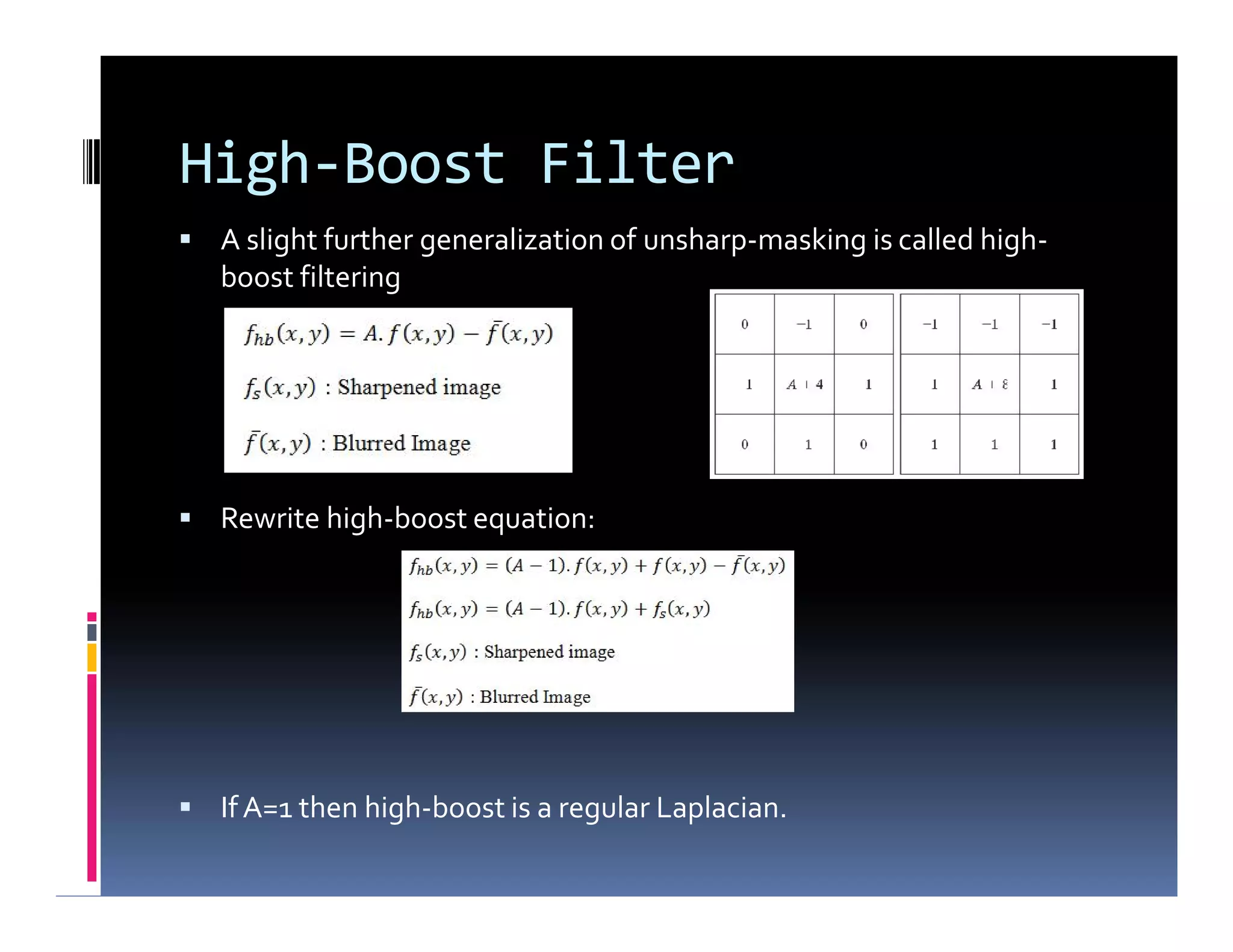

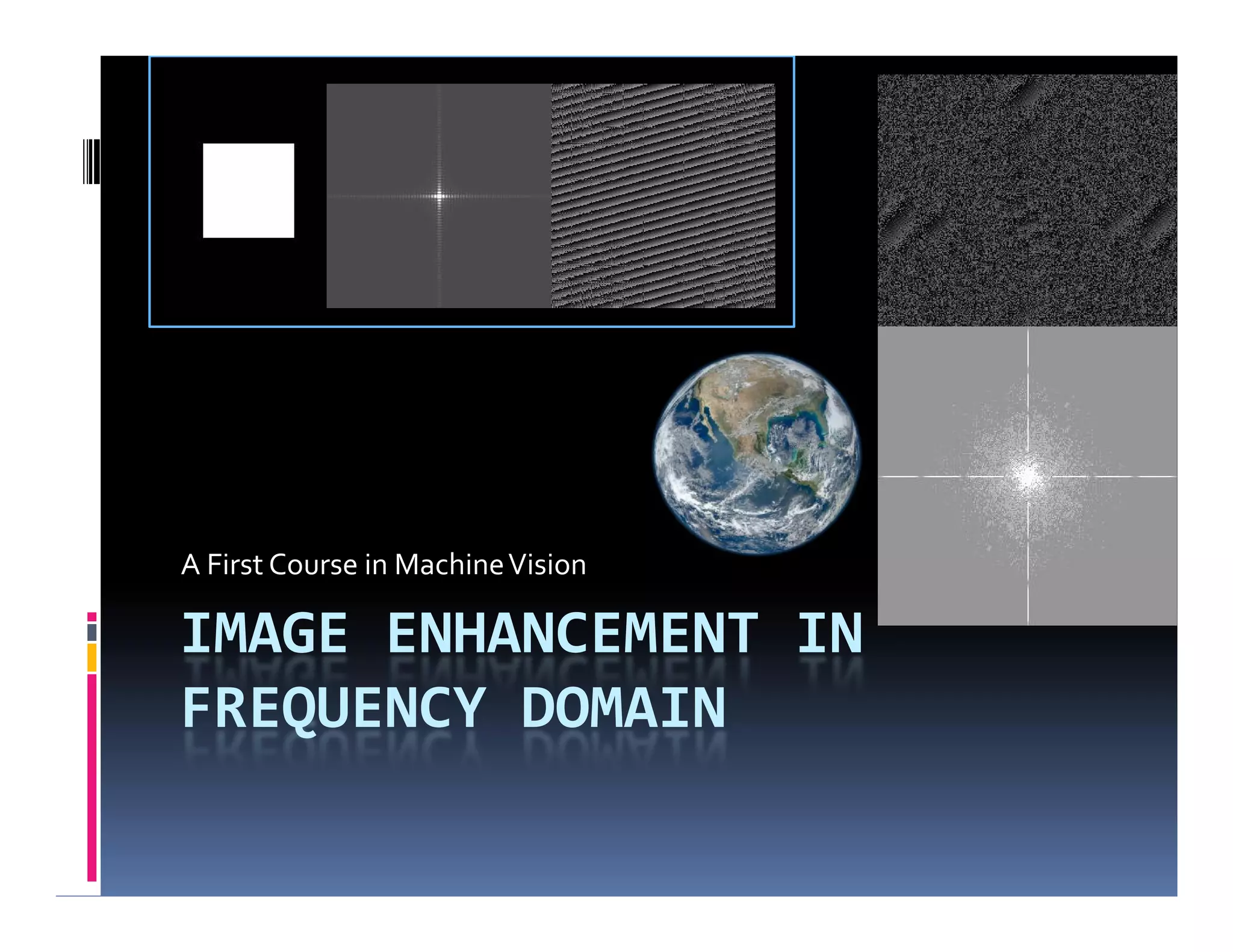
![Background
Discovered by “Jean Baptiste Joseph Fourier”.
Published as aTheory in the book:”Analytic
Theory of Heat” [1822].
55 years later translated in English by
Freeman[1878].
Fourier express that: any function that
periodically repeats itself can be expressed as a
sum of sines/or cosines of different frequencies,
each multiplied by a different coefficient(we call
this sum Fourier series).
Discovered by “Jean Baptiste Joseph Fourier”.
Published as aTheory in the book:”Analytic
Theory of Heat” [1822].
55 years later translated in English by
Freeman[1878].
Fourier express that: any function that
periodically repeats itself can be expressed as a
sum of sines/or cosines of different frequencies,
each multiplied by a different coefficient(we call
this sum Fourier series).](https://image.slidesharecdn.com/4-imageenhancementinspatialdomain-191207084842/75/4-image-enhancement-in-spatial-domain-56-2048.jpg)
